Renault presents the electric Renault 5: A nostalgia-evoking concept in bright green
The electric R5 is by no means a vintage car like the Honda-e. Although the 3.92 metre-long small car offers references reminiscent of its predecessor from the 70s and 80s, it translates these almost without exception into the present day. The concept car unveiled in 2021 already suggested that Renault would follow this “retrofuturistic” path in its reinterpretation. The electric series R5 also has modern proportions and a much wider presence than the model from back then. The historical anchor points are more noticeable at second glance – and they are on the inside rather than the outside. More on this in a moment.
Firstly, let’s take a look at the technical data sheet. The Renault 5 E-Tech Electric measures 3.92 x 1.77 x 1.5 metres with a wheelbase of 2.54 metres. There is a choice of three motorisations and two battery sizes. At the market launch in autumn, the model will initially only be available with the larger 52 kWh battery (net) and the most powerful engine – 110 kW. Variants with a 40 kWh battery and electric motors with 90 and 70 kW respectively will follow later. One thing is clear: both batteries contain prismatic NMC cells from Renault’s battery partner AESC. According to Renault, both the vehicles themselves and the batteries (from 2025) will be manufactured in northern France.
V2G function for higher motorisations
Depending on the battery size, the French state a range of 400 or 300 kilometres according to WLTP – although homologation has not yet been completed and therefore more precise values will follow. The manufacturer puts the top speed at 150 kph and acceleration from 0 to 100 kph in under eight seconds. All electric R5s have an 11 kW AC onboard charger as standard. DC charging is possible with up to 100 kW. The time window for fast charging is around 30 minutes from 15 to 80 per cent charge level (SoC). At AC charging points, the charging process should take 4.5 or 3.5 hours, depending on the battery size.
Renault staggers several functions according to the motorisation. For example, the 70 kW model comes ex works without a DC charging function and only with a unidirectional AC onboard charger. This variant is therefore not capable of fast charging or feeding electricity back into the grid in a V2G function. The other two motorisations have bidirectional AC chargers on board and – as announced by Renault in mid-2023 – will be the company’s first vehicles capable of vehicle-to-grid. When it comes to fast charging, the most powerful motorisation with 100 kW will have added value compared to the mid-range motorisation with 80 kW. In principle, the large battery will initially be reserved for the R5 with the most powerful engine. The 70 and 90 kW versions are coupled with the smaller battery.
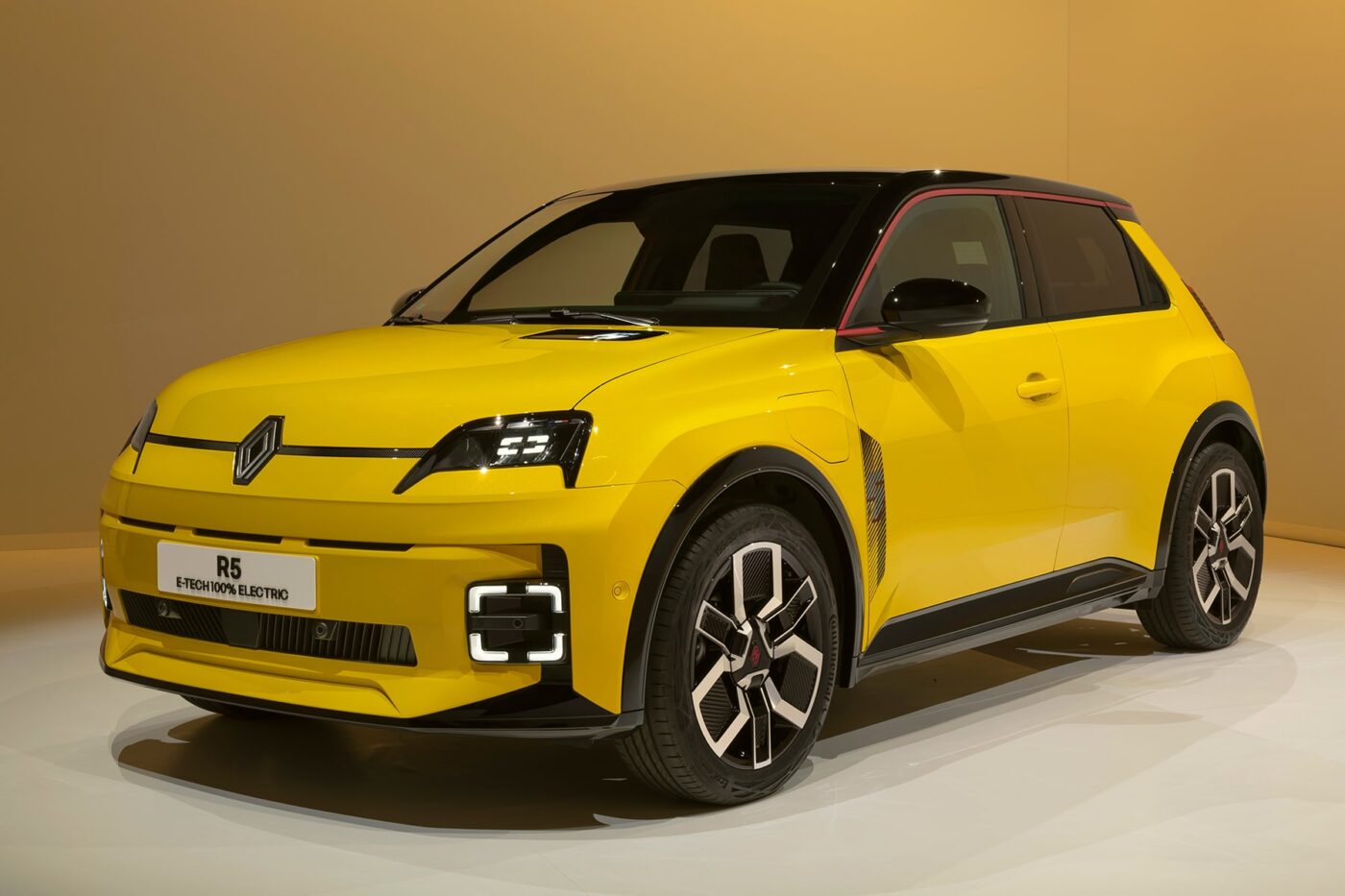
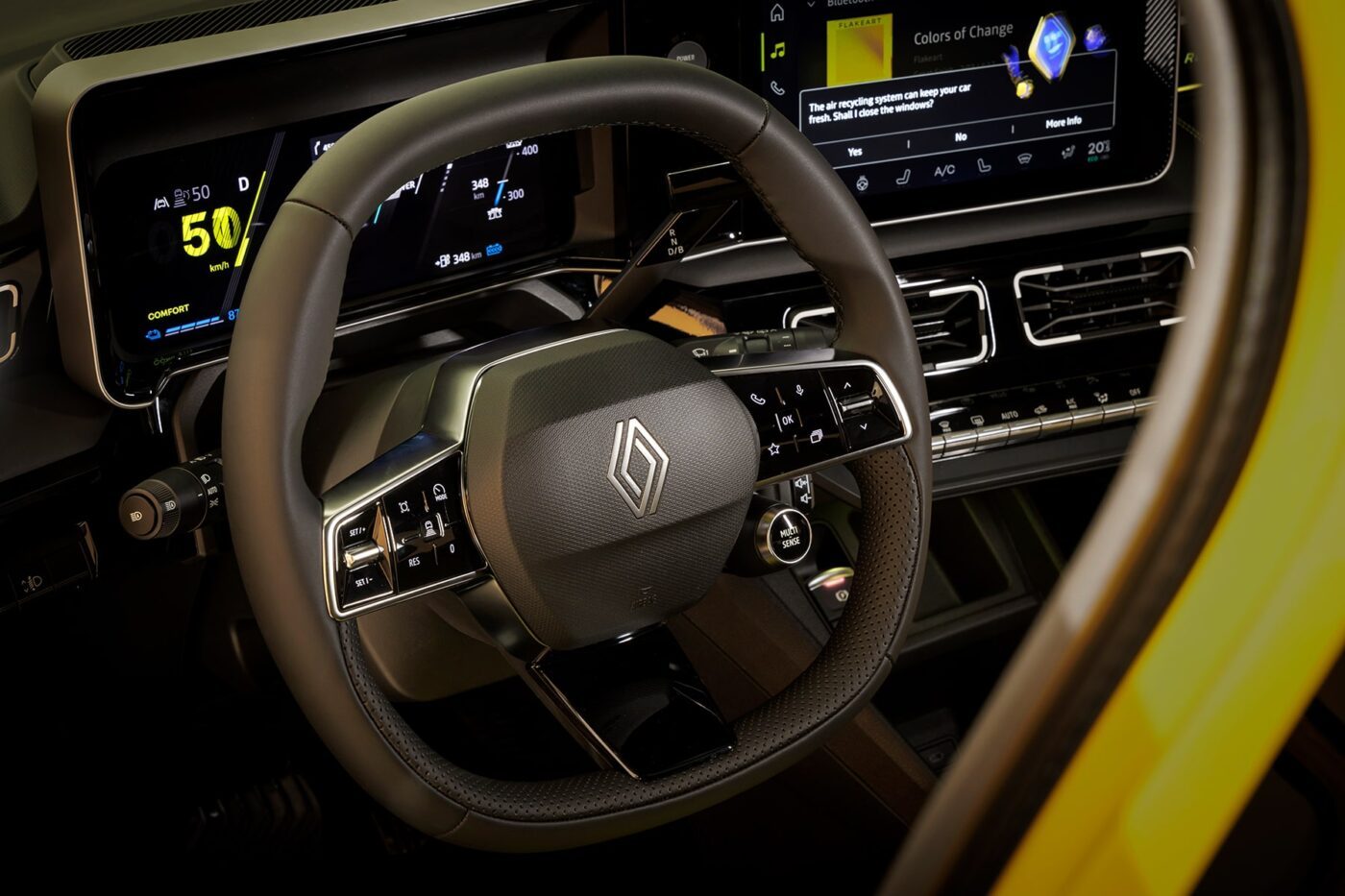
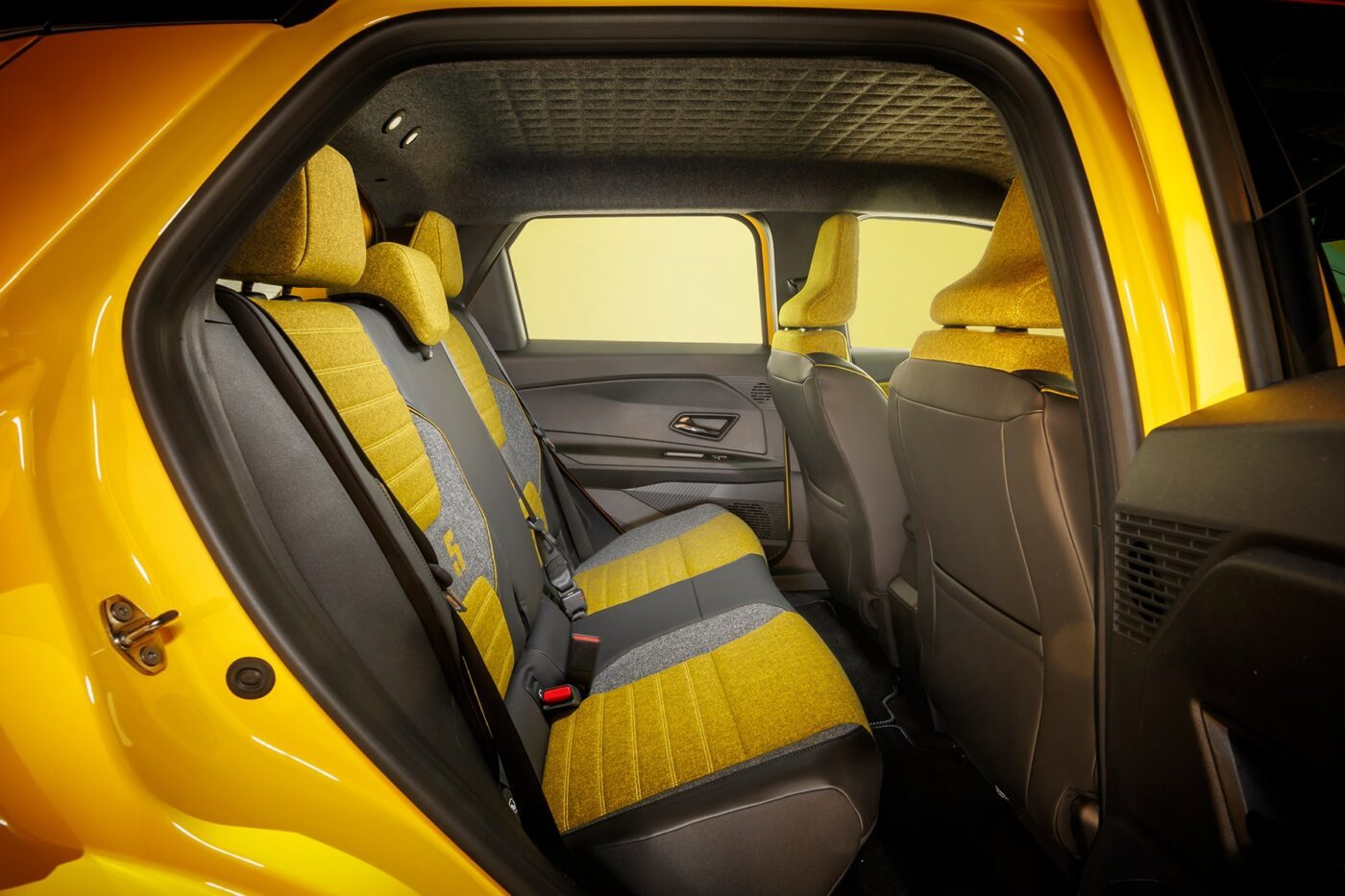
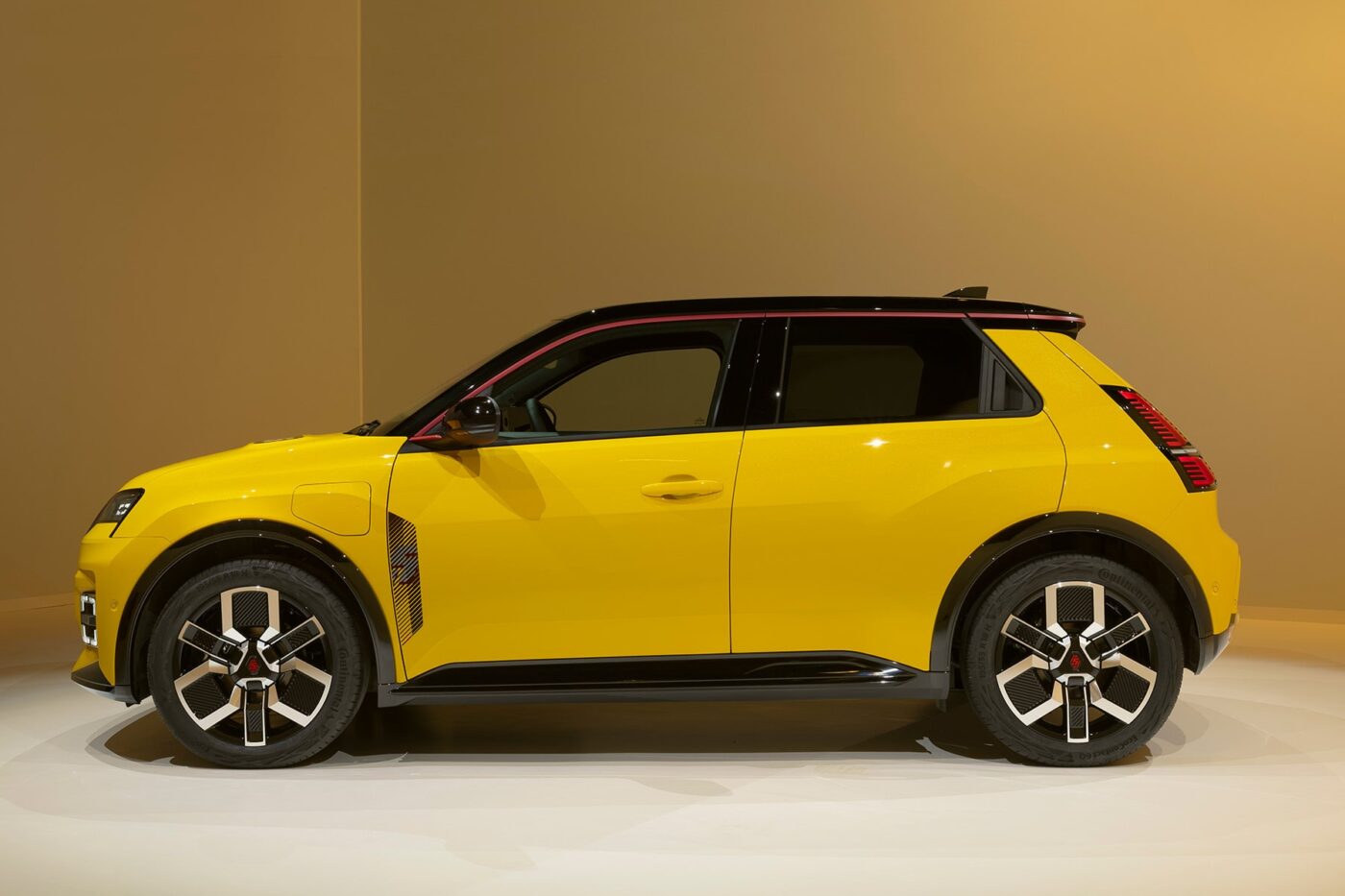
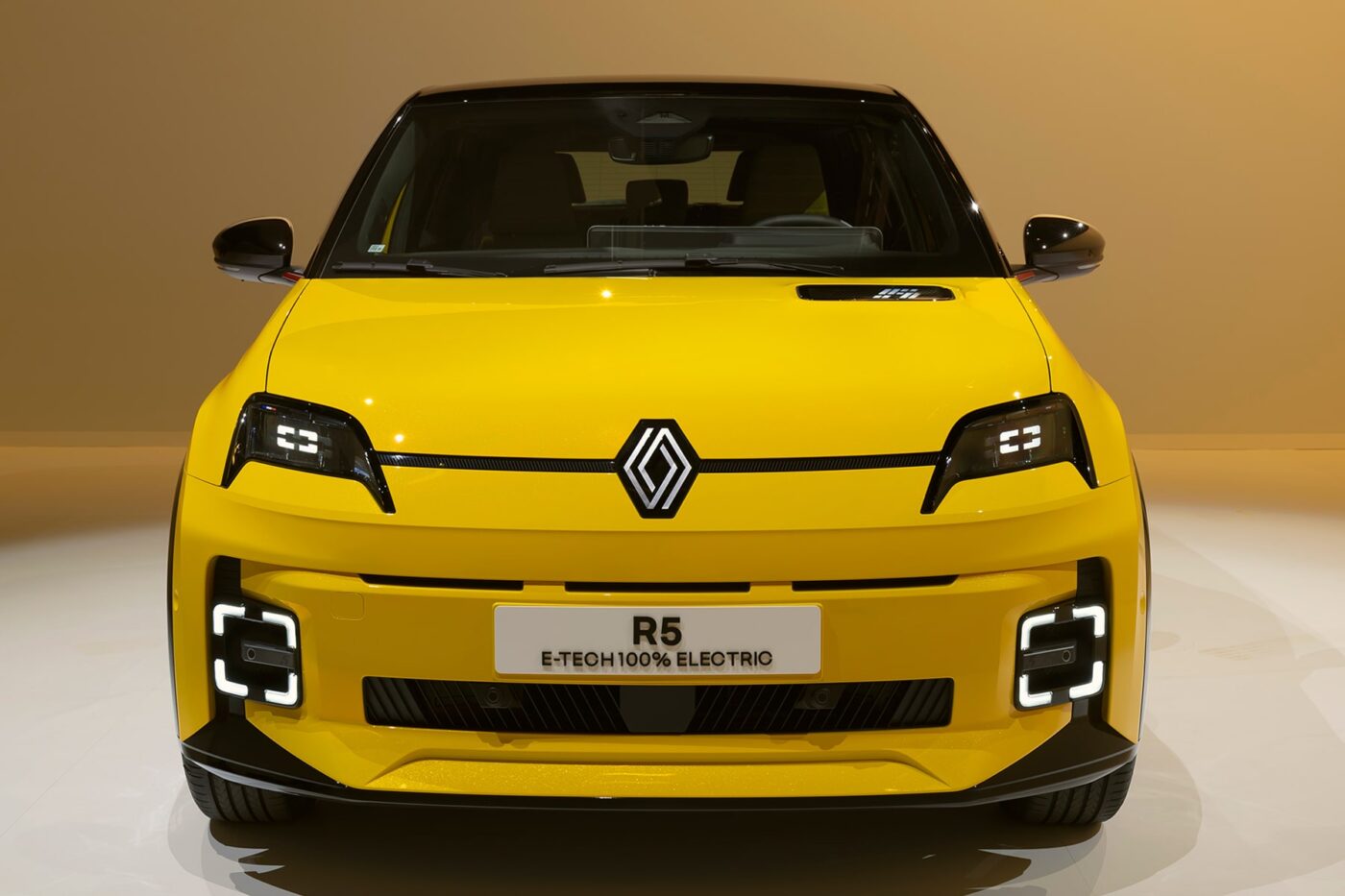
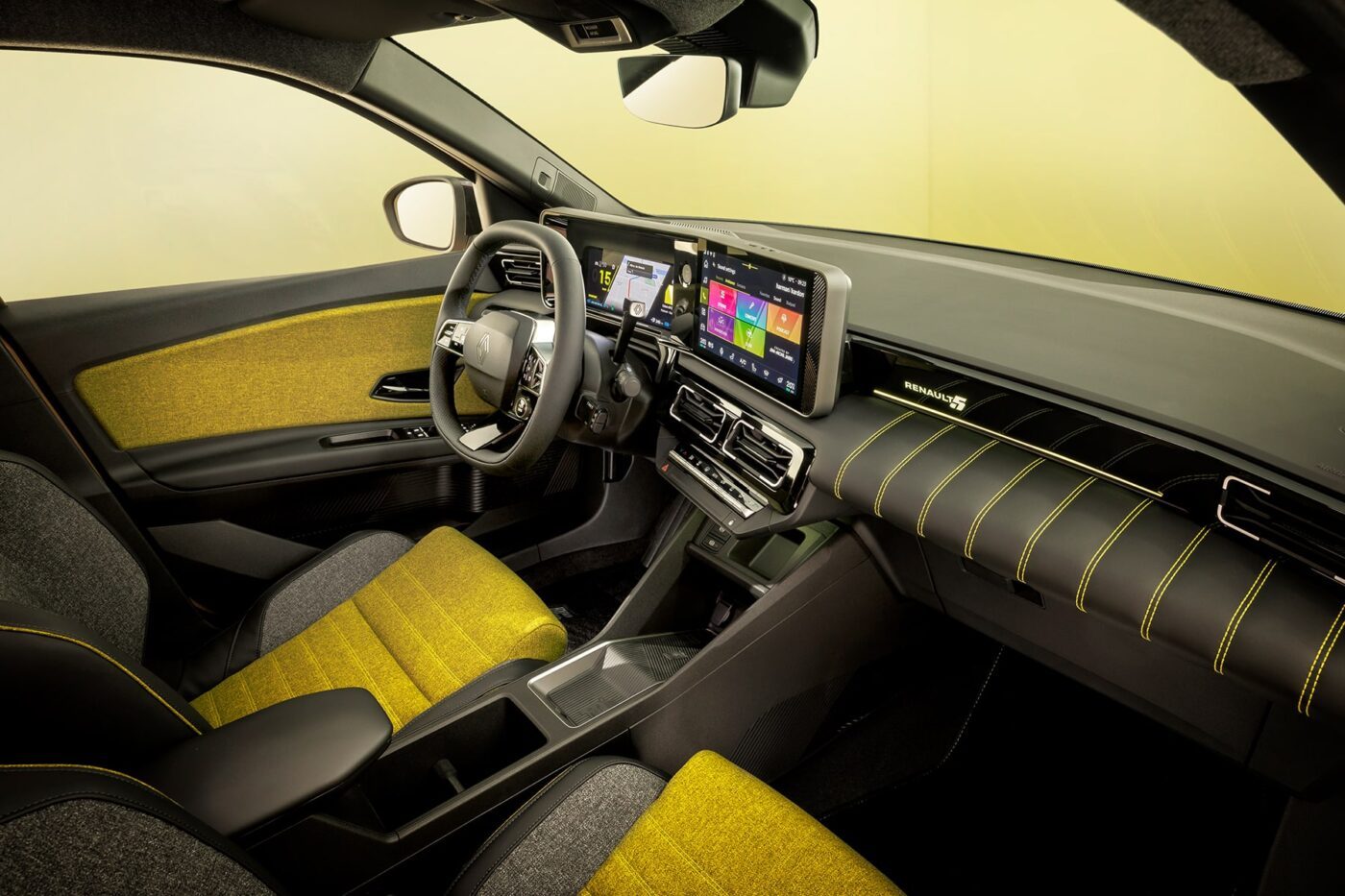
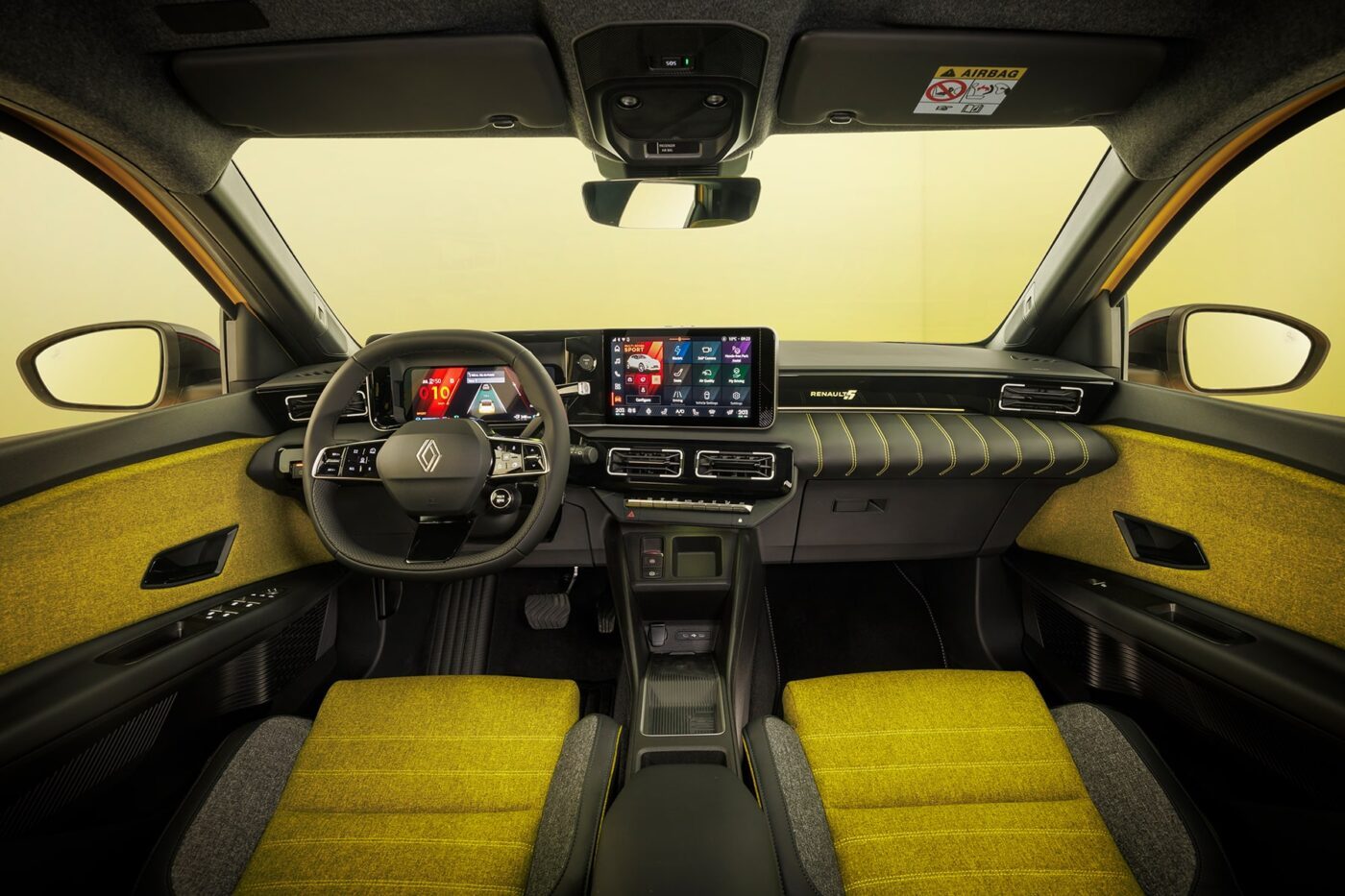
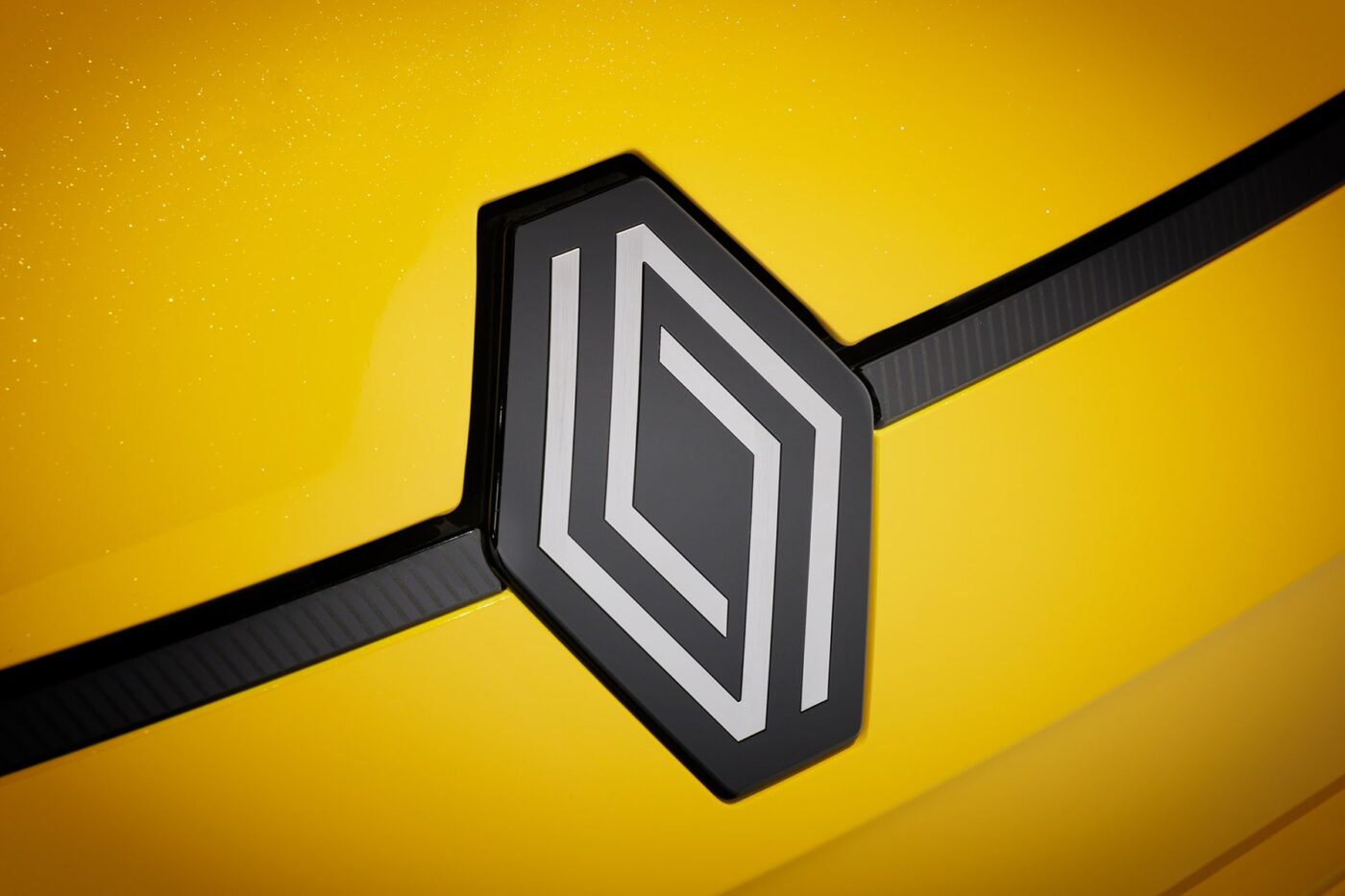
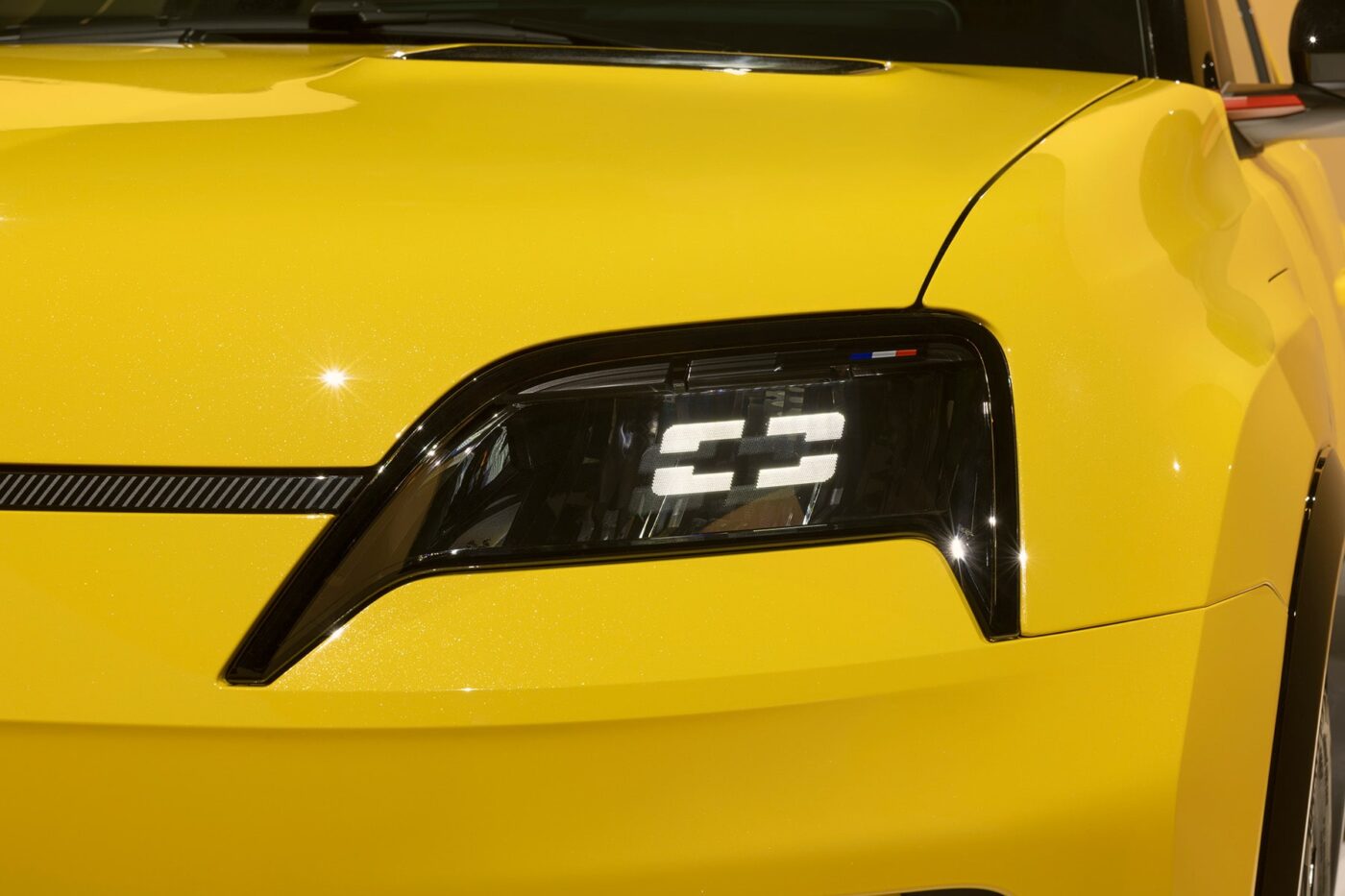
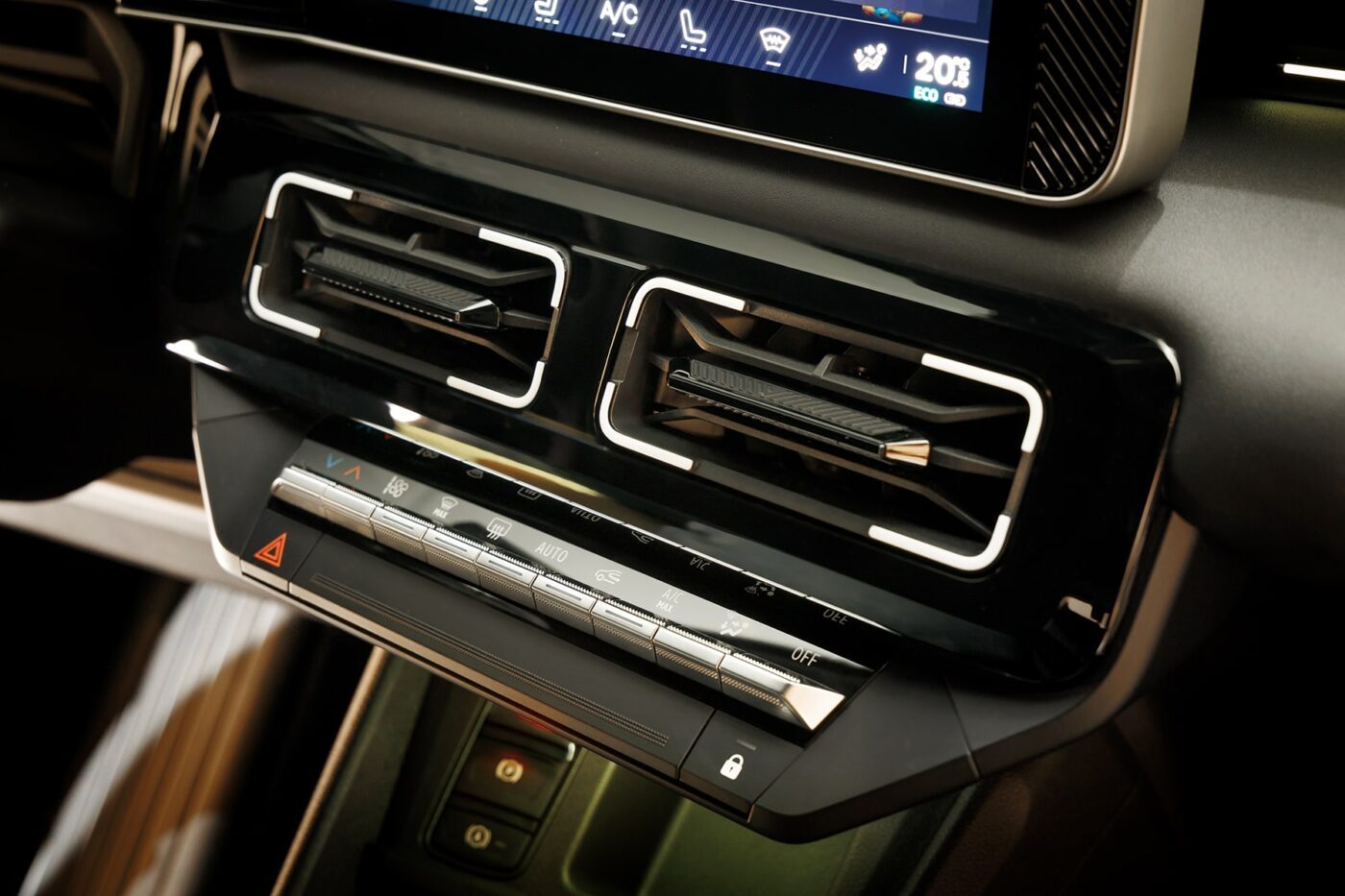
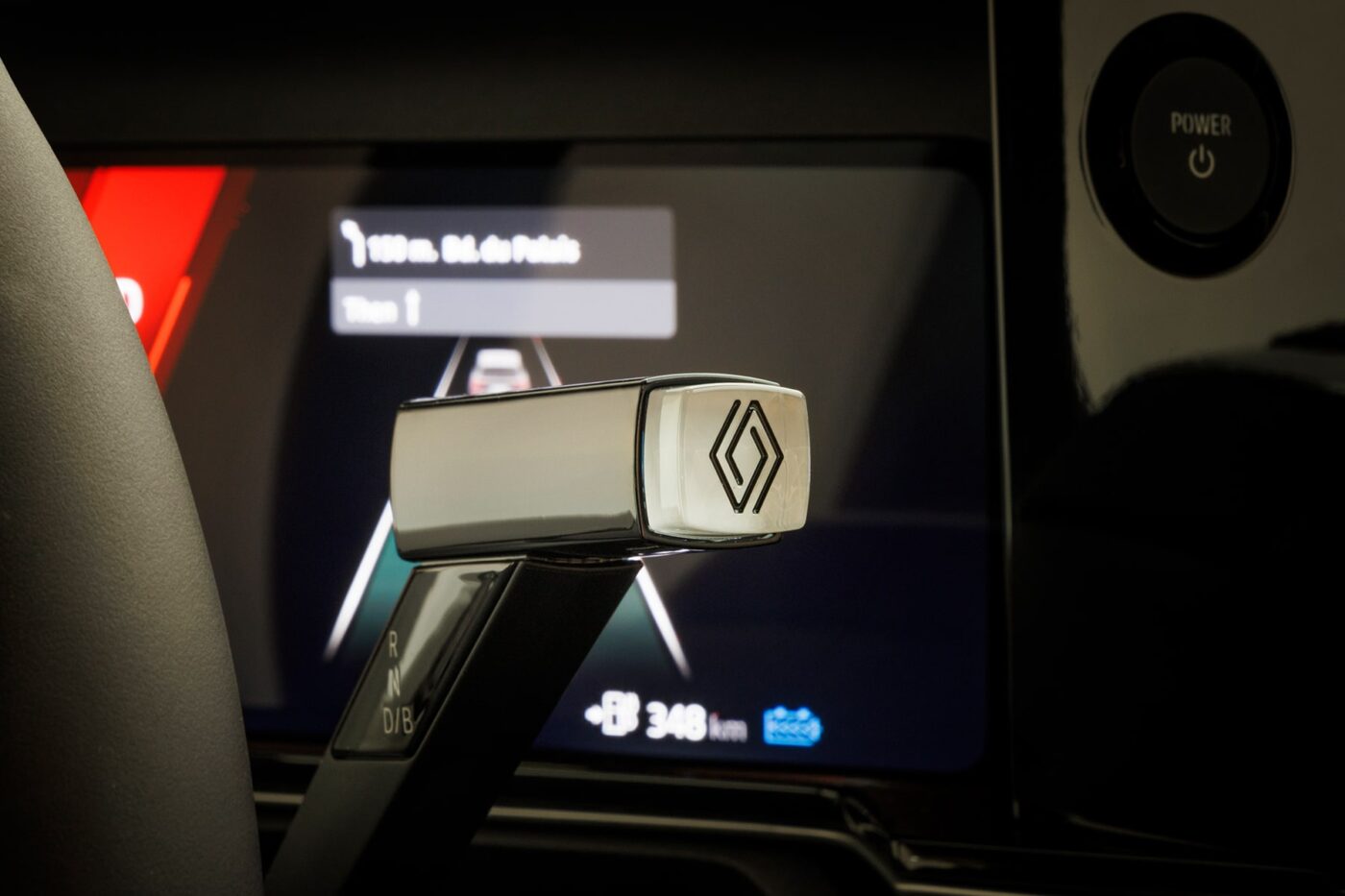
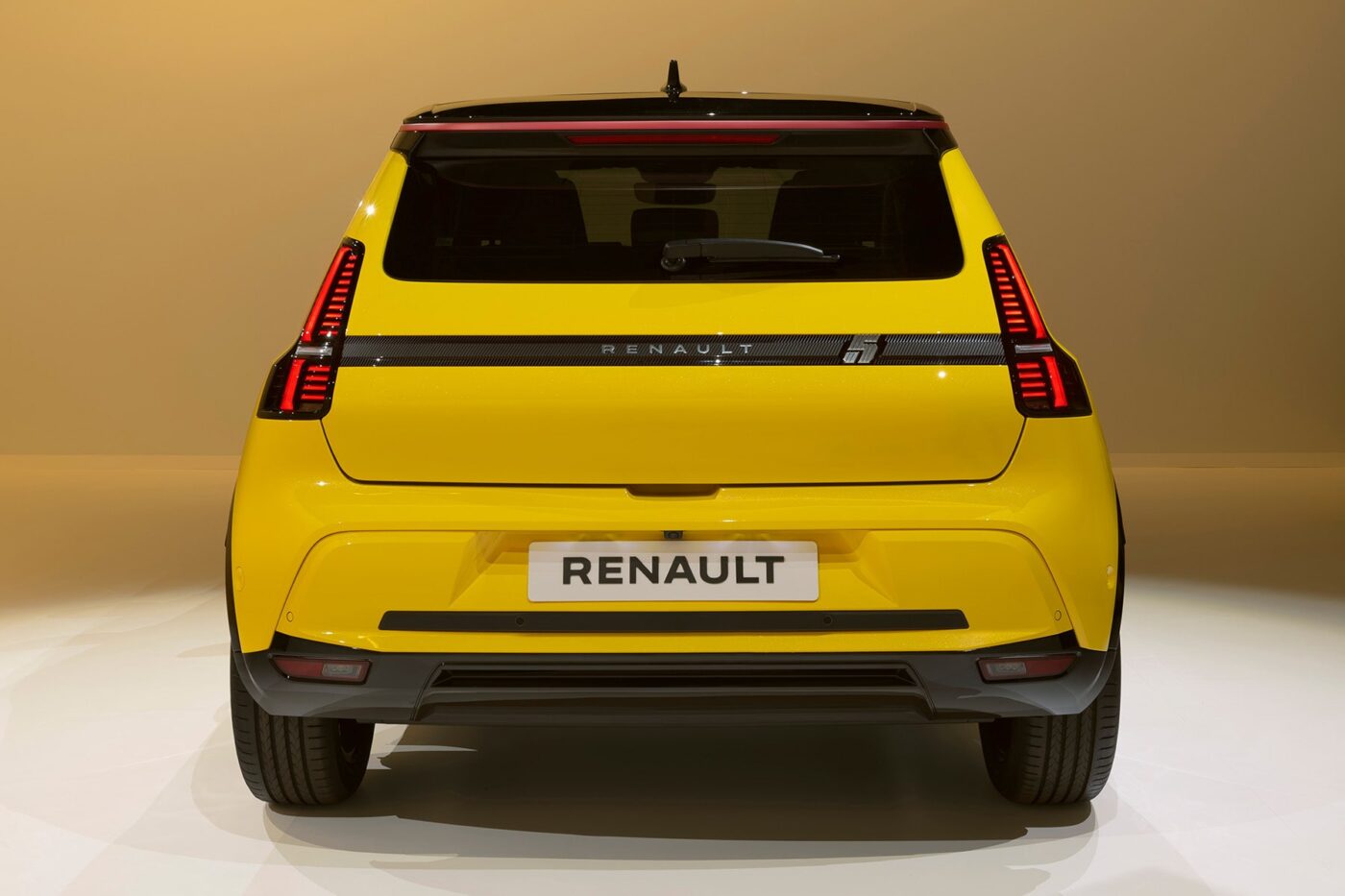
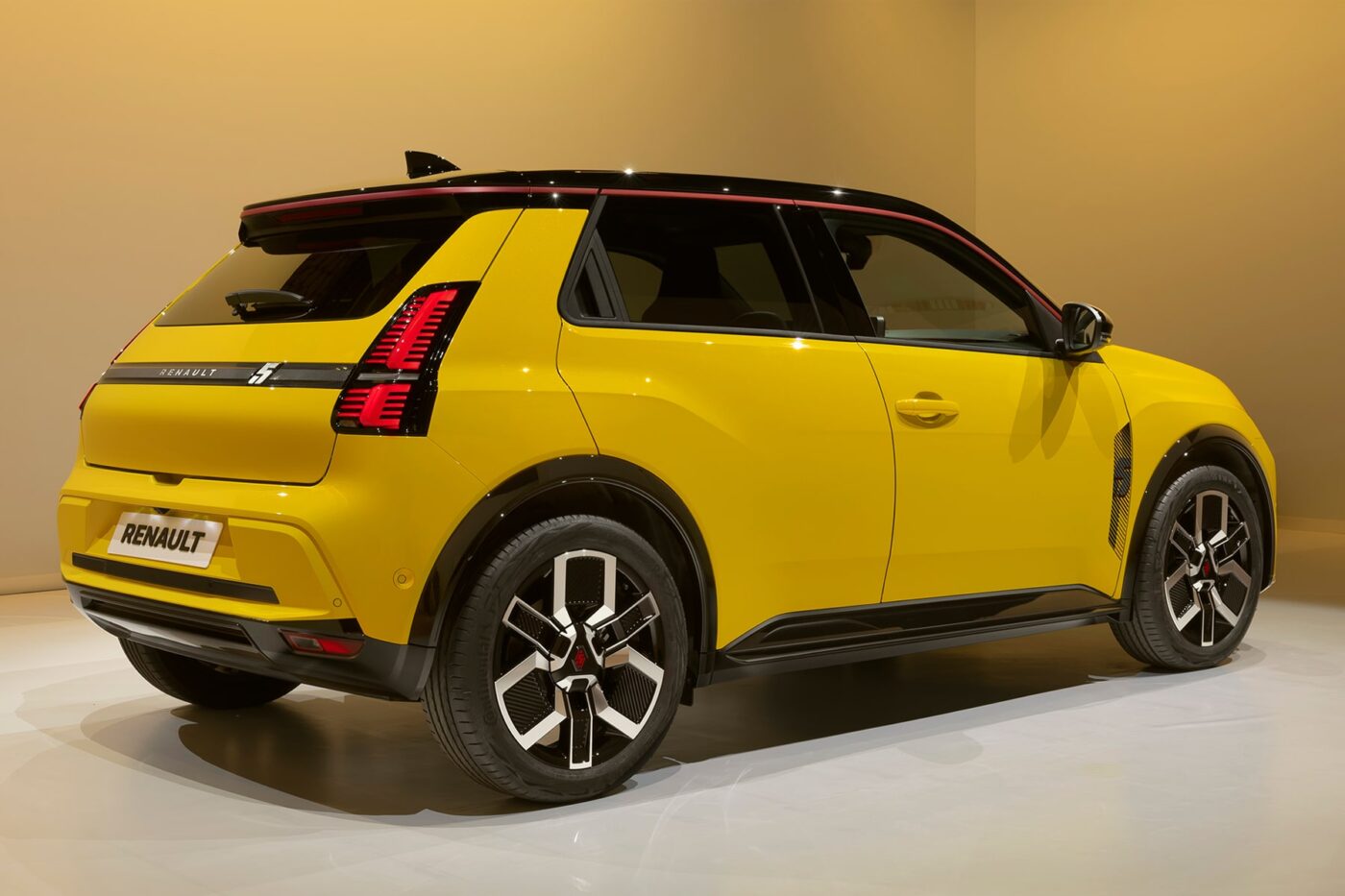
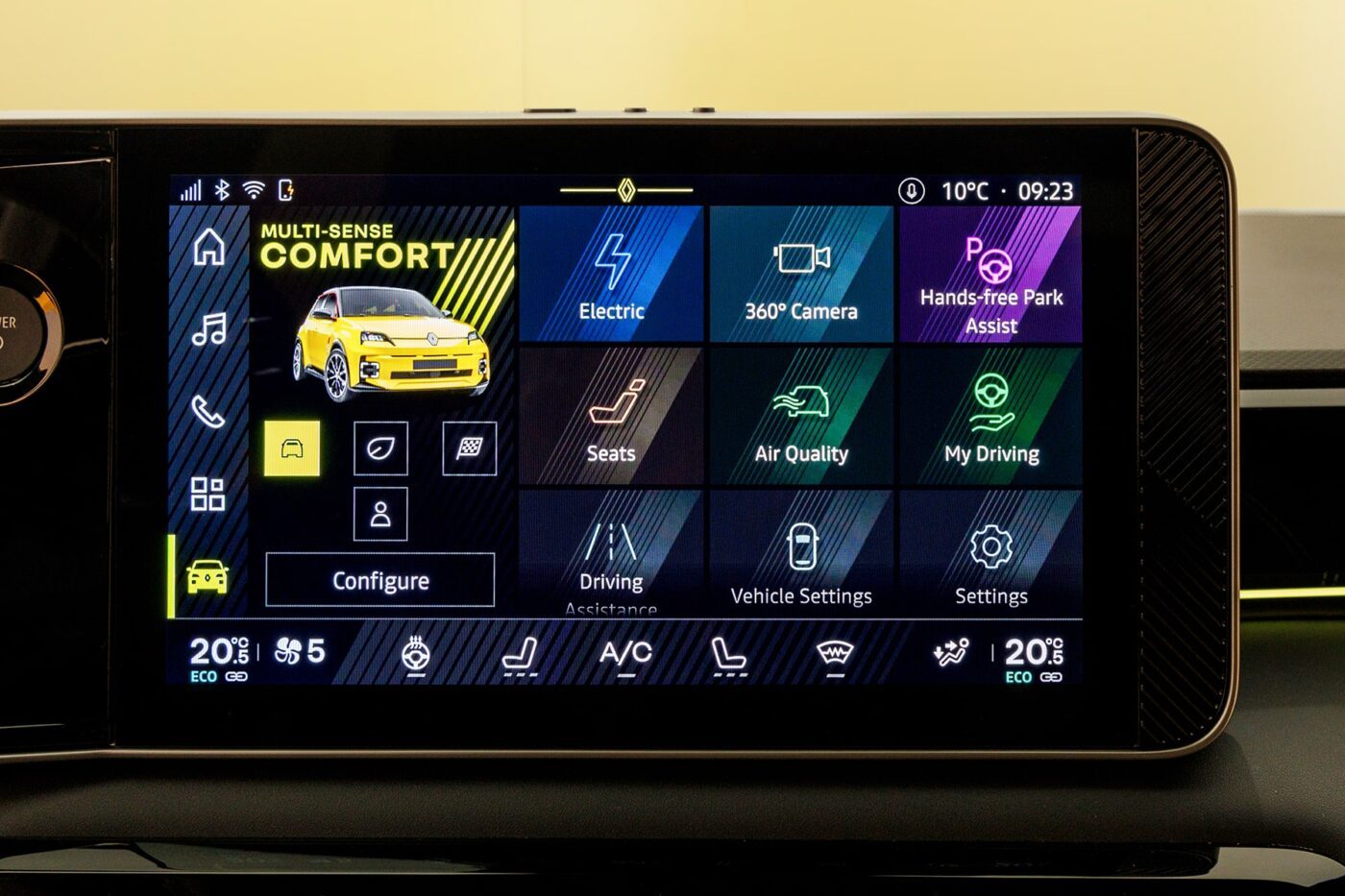
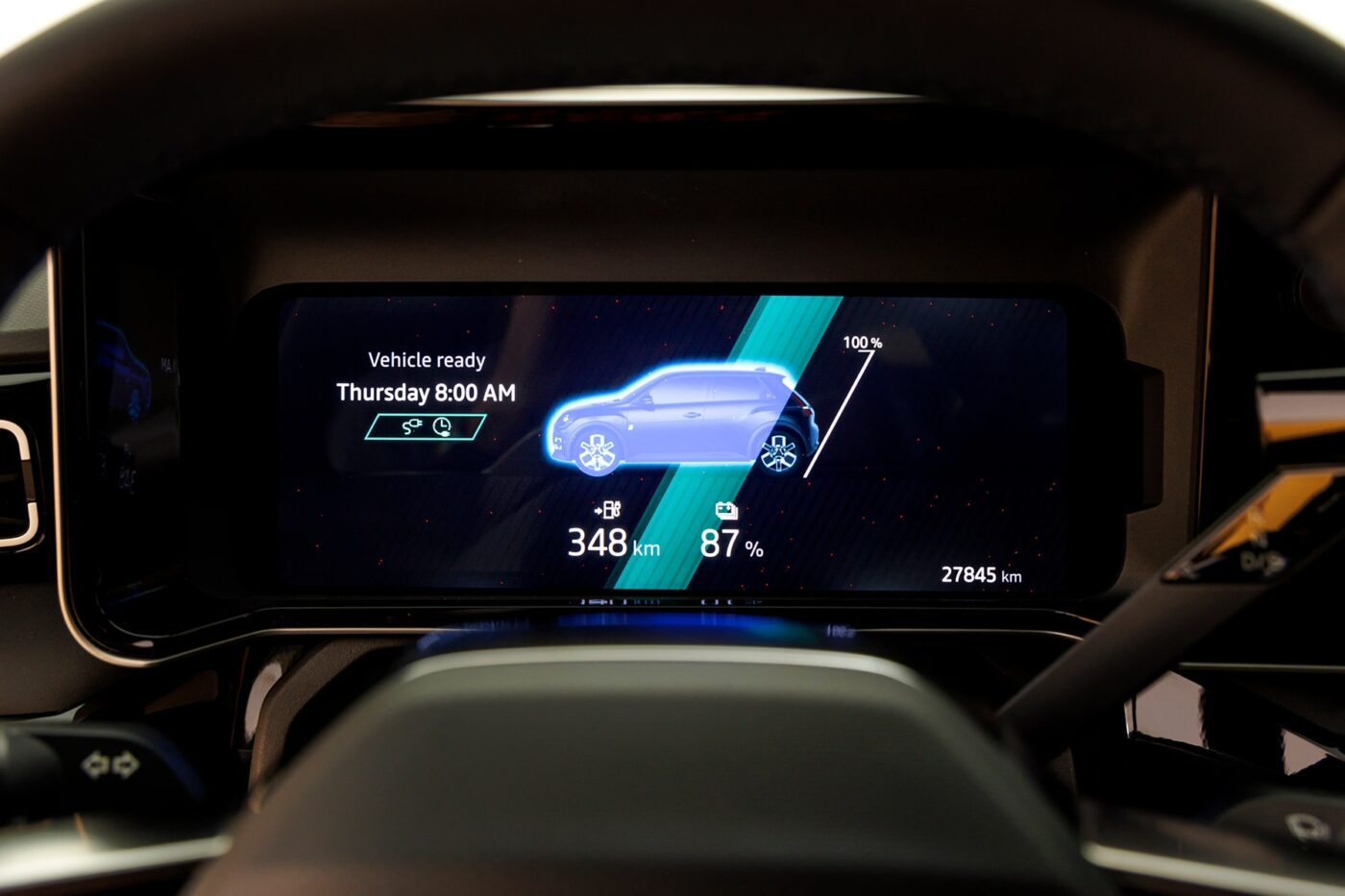
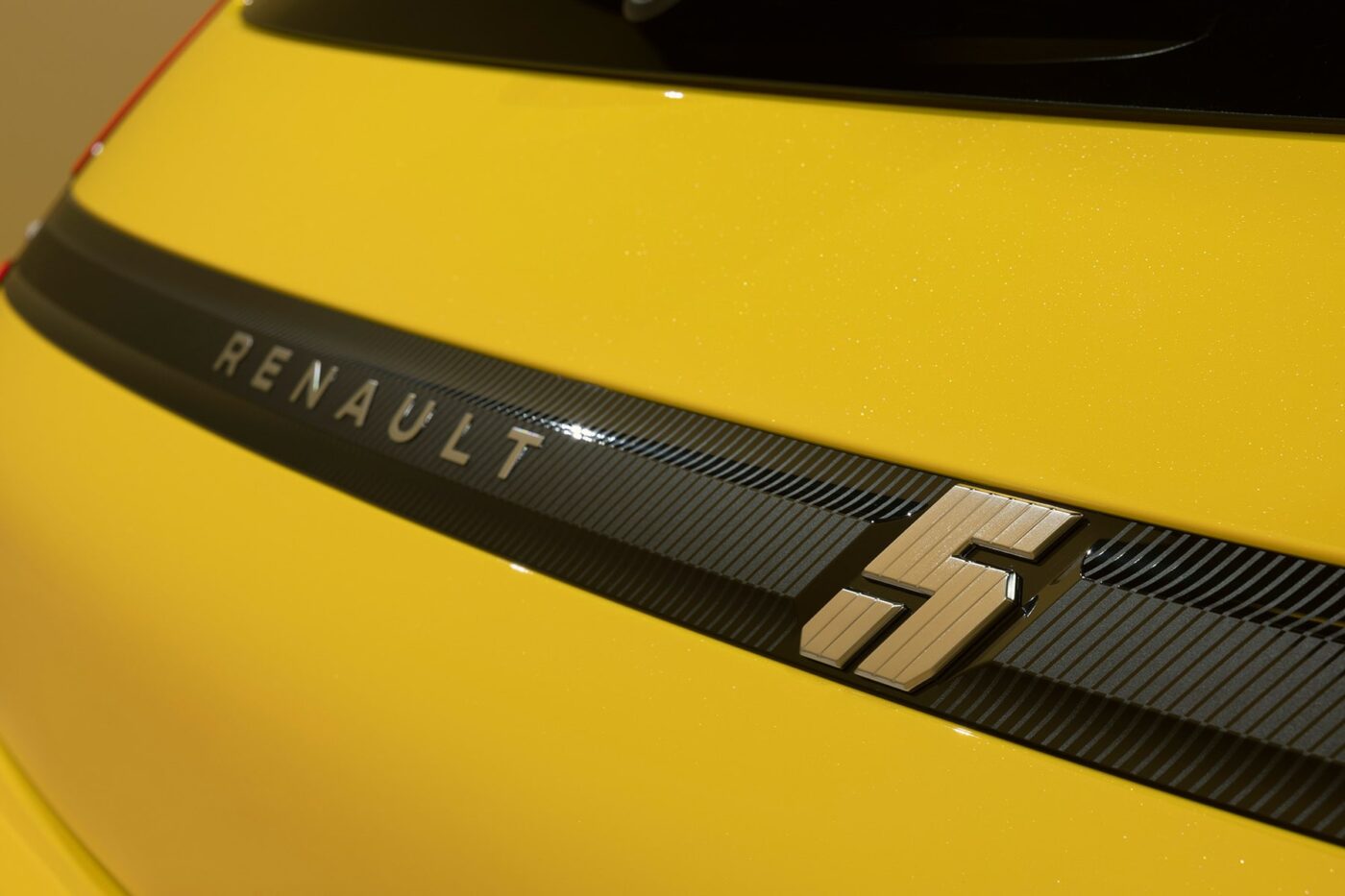
The new Group platform AmpR Small (previously known as CMF-BEV) – a purely electric car architecture for the B-segment – serves as the basis for the small electric car. The Renault 5 E-Tech Electric is the first representative of this platform, whereby, according to Renault, the electric R5 dictated the platform design – and not the corresponding combustion engine model, as is usually the case. Renault designers recently emphasised this to media representatives at a preview event in Paris. But it is also a fact that, for reasons of synergy, the platform also borrows a number of features from the CMF-B platform on which the Clio and Captur are based – such as the front suspension.
This mixture is said to have led to a shortened development time of three years, drawing on the company’s own expertise and the new eMobility and software unit Ampere. The wide 18-inch wheels, the flat interior floor and minimal overhangs (75 cm at the front, 63 cm at the rear) with, conversely, a large wheelbase are evidence of the BEV-only origins of the new R5. For orientation: at 3.92 metres in length, the Renault E-Tech Electric lies between the 30-centimetre shorter Twingo and the nine-centimetre longer Clio. The wheelbase is only four centimetres shorter than that of the Clio. At the same time, the new R5 is six centimetres higher than the Clio, but five centimetres lower than the Twingo. Incidentally, the 52 kWh is the maximum capacity currently offered by the AmpR Small.
Battery pack with up to four “large modules”
In this context, another digression into the technology: Renault’s new EV platform offers space for a liquid-cooled battery pack with up to four “large modules” in which the cells are arranged. In contrast to the batteries (with 12 modules) in the Megane E-Tech Electric and the Zoe, the new packaging should save 20 kilos. At full capacity, the four large modules offer the aforementioned 52 kWh; in the smaller battery variant, the manufacturer has omitted one of the large modules and simultaneously reduced the number of cells per module (from 46 to 31 slightly larger cells). The housing and the NMC cell chemistry remain unchanged.
The electric motor is a front-mounted synchronous electric motor with a wound rotor. A similar unit is used in the Megane and Scenic E-Tech Electric. However, thanks to new power electronics and a revised reduction gearbox, it now takes up less installation space according to Renault – the prerequisite for it to fit into the new small car.
Before we get to the design features of the electric R5, here are a few key figures: The five-seater has a boot capacity of 326 litres, an unladen weight of 1,350 kilograms (40 kWh version) or from 1,450 kilograms (52 kWh), a towing capacity of up to 500 kilograms, a turning circle of 10.3 metres and V2L charging via adapter with up to 3.7 kW.
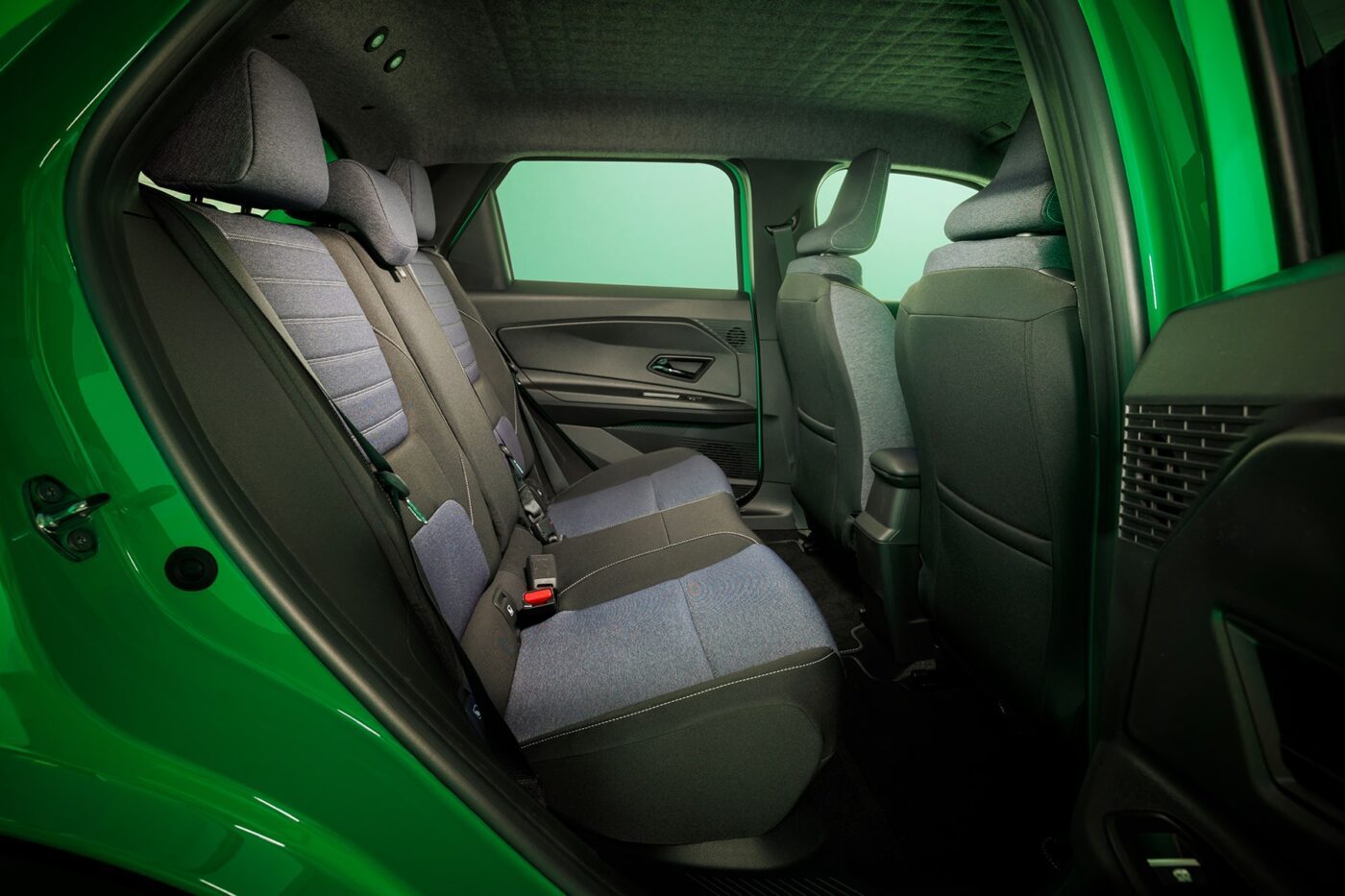
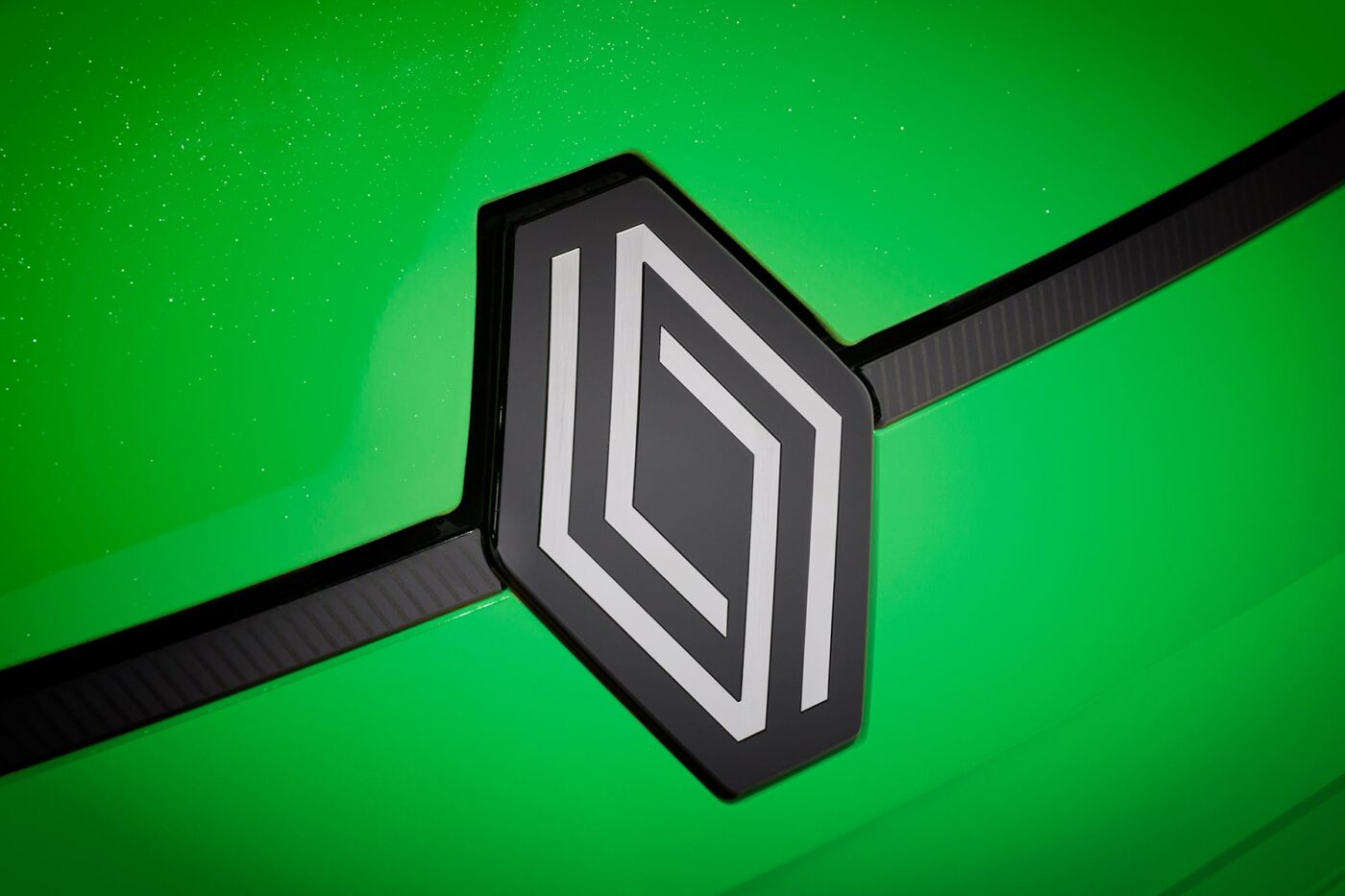
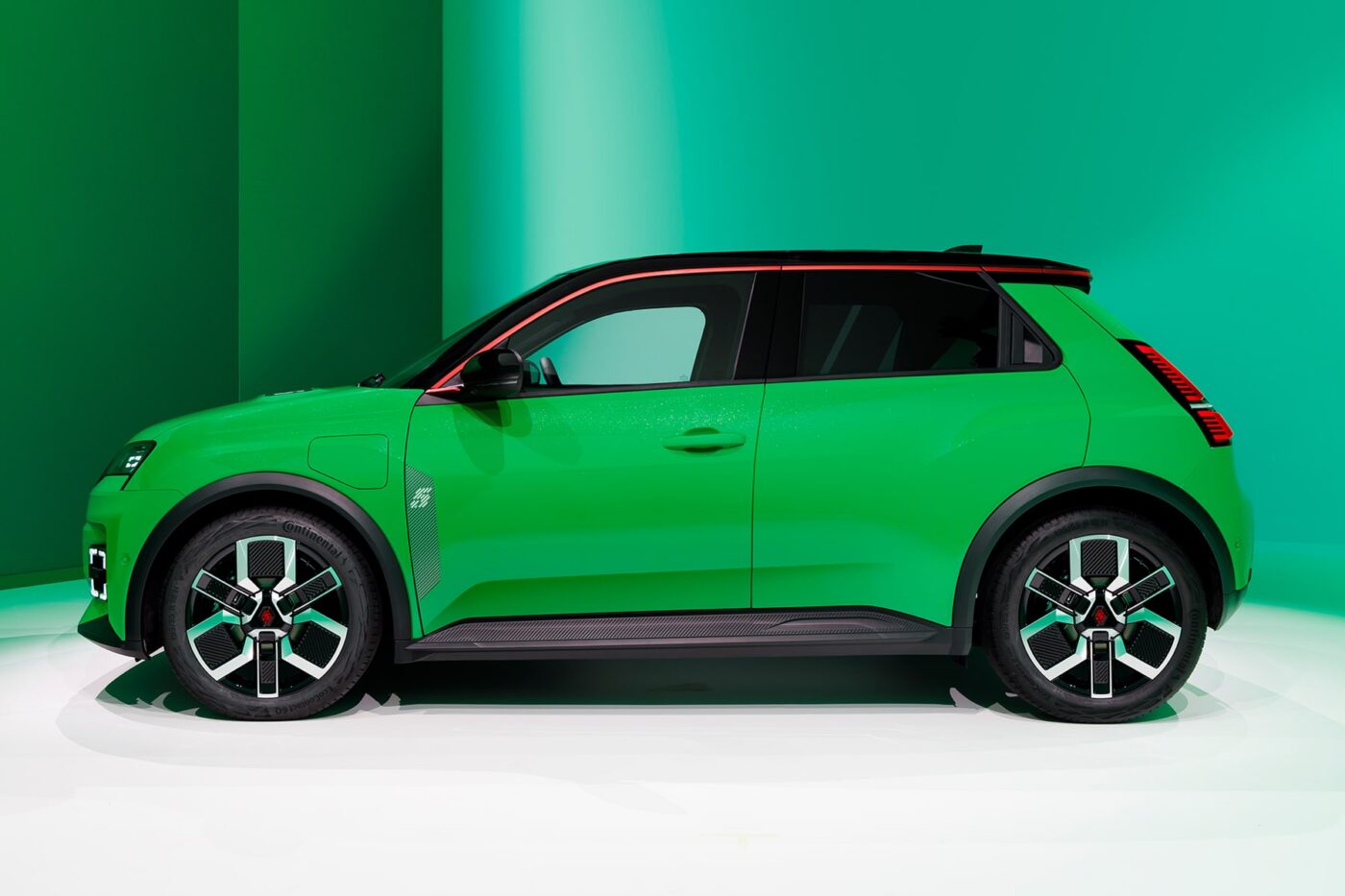
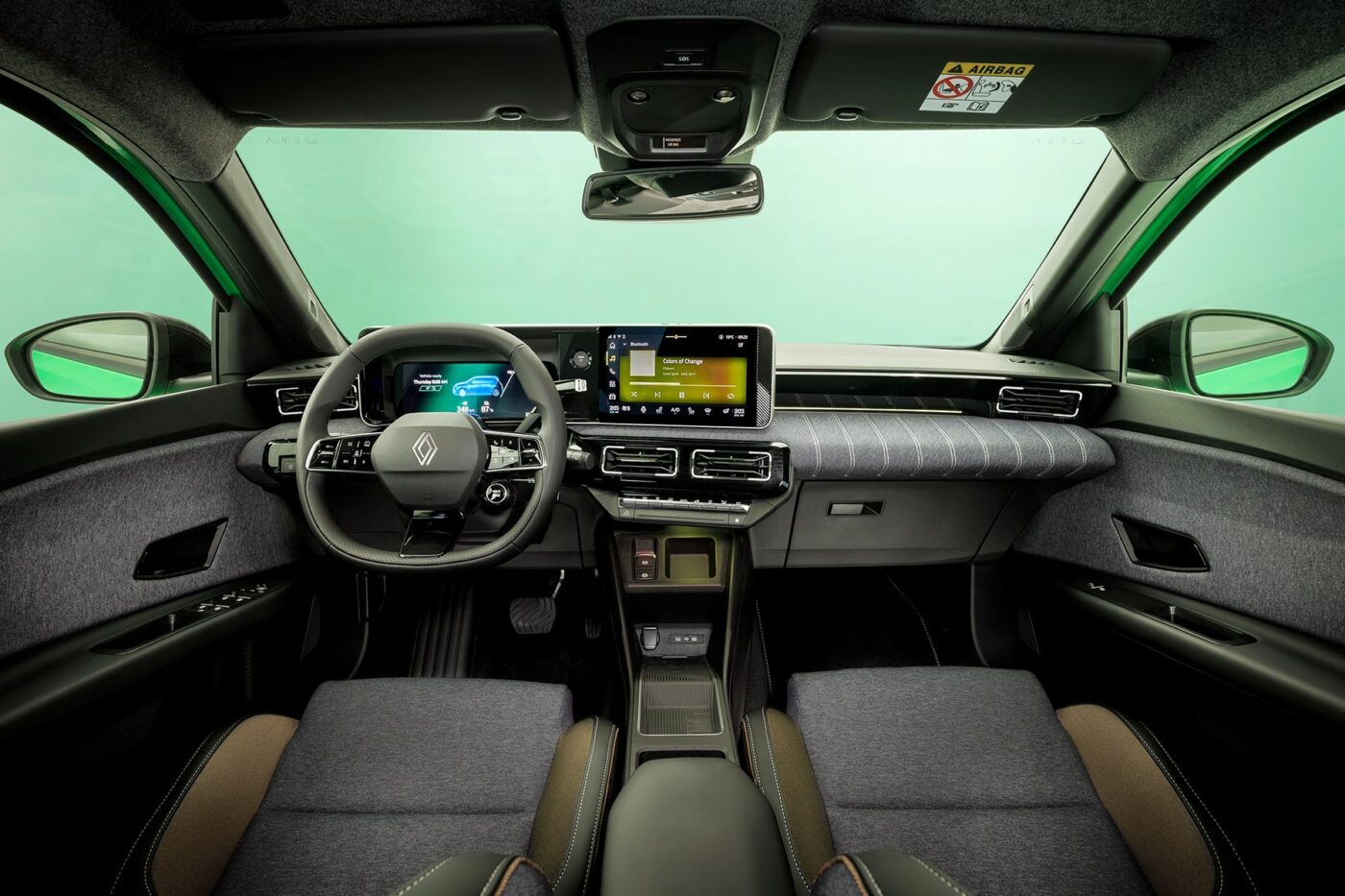
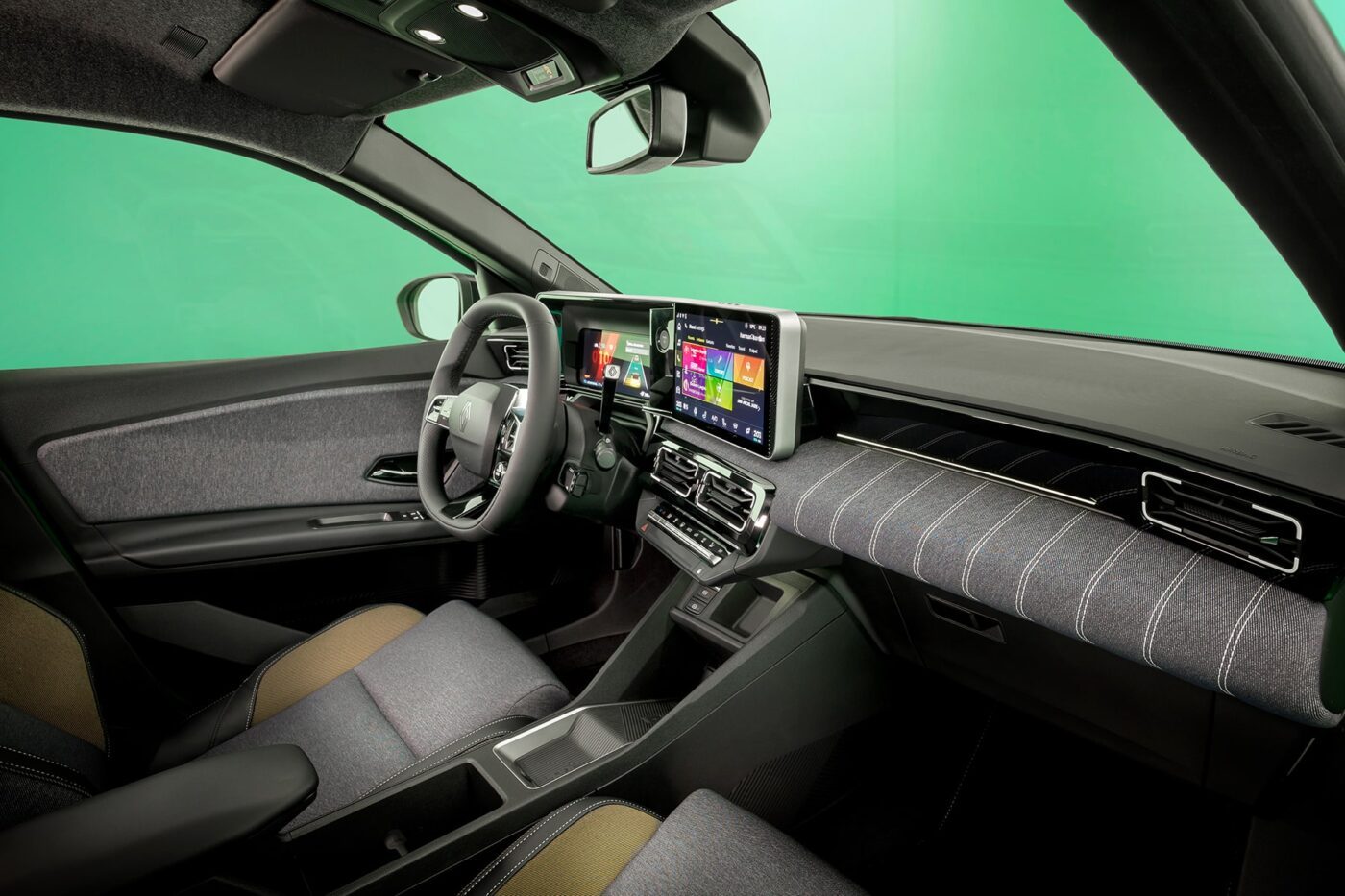
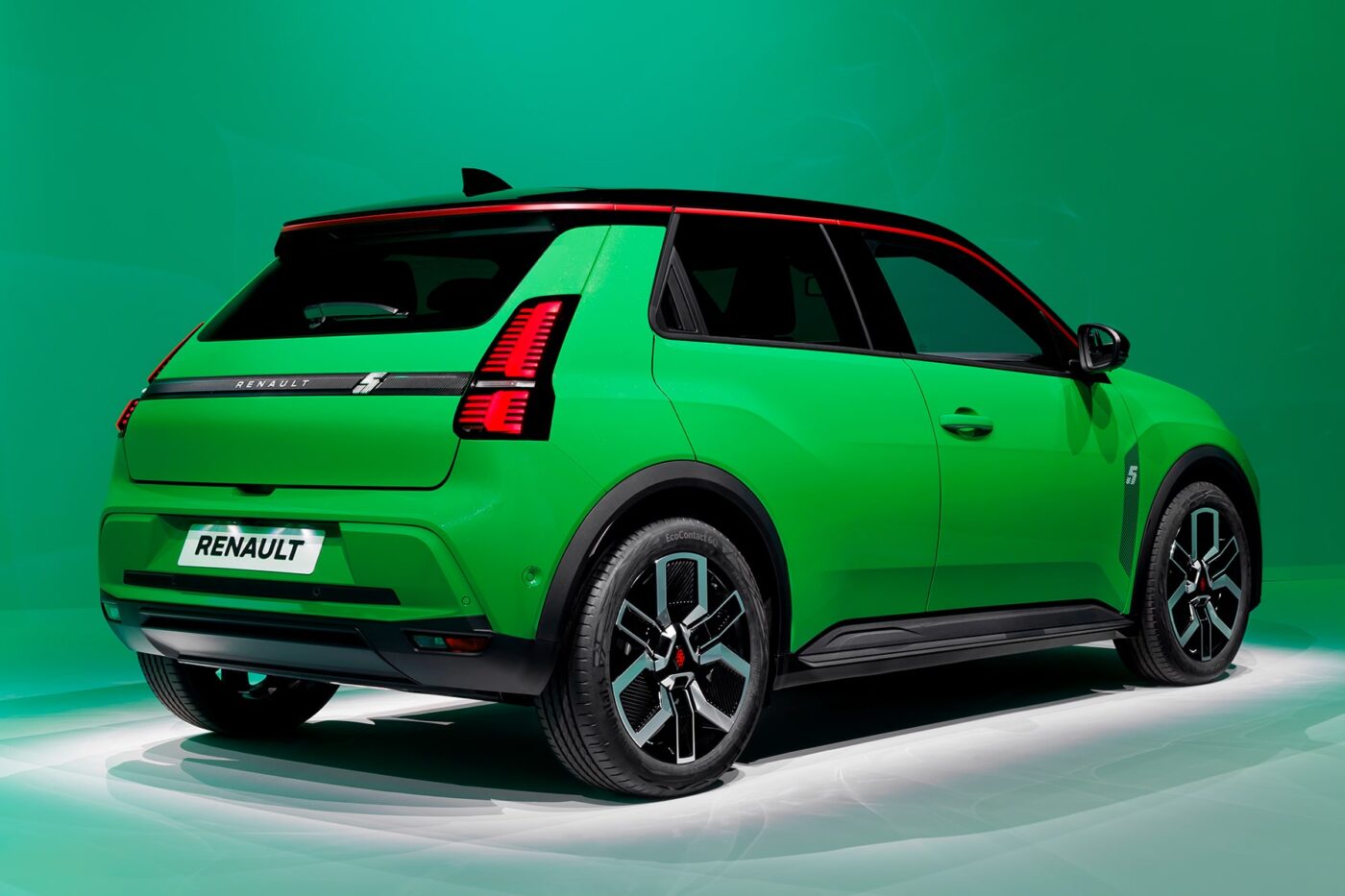
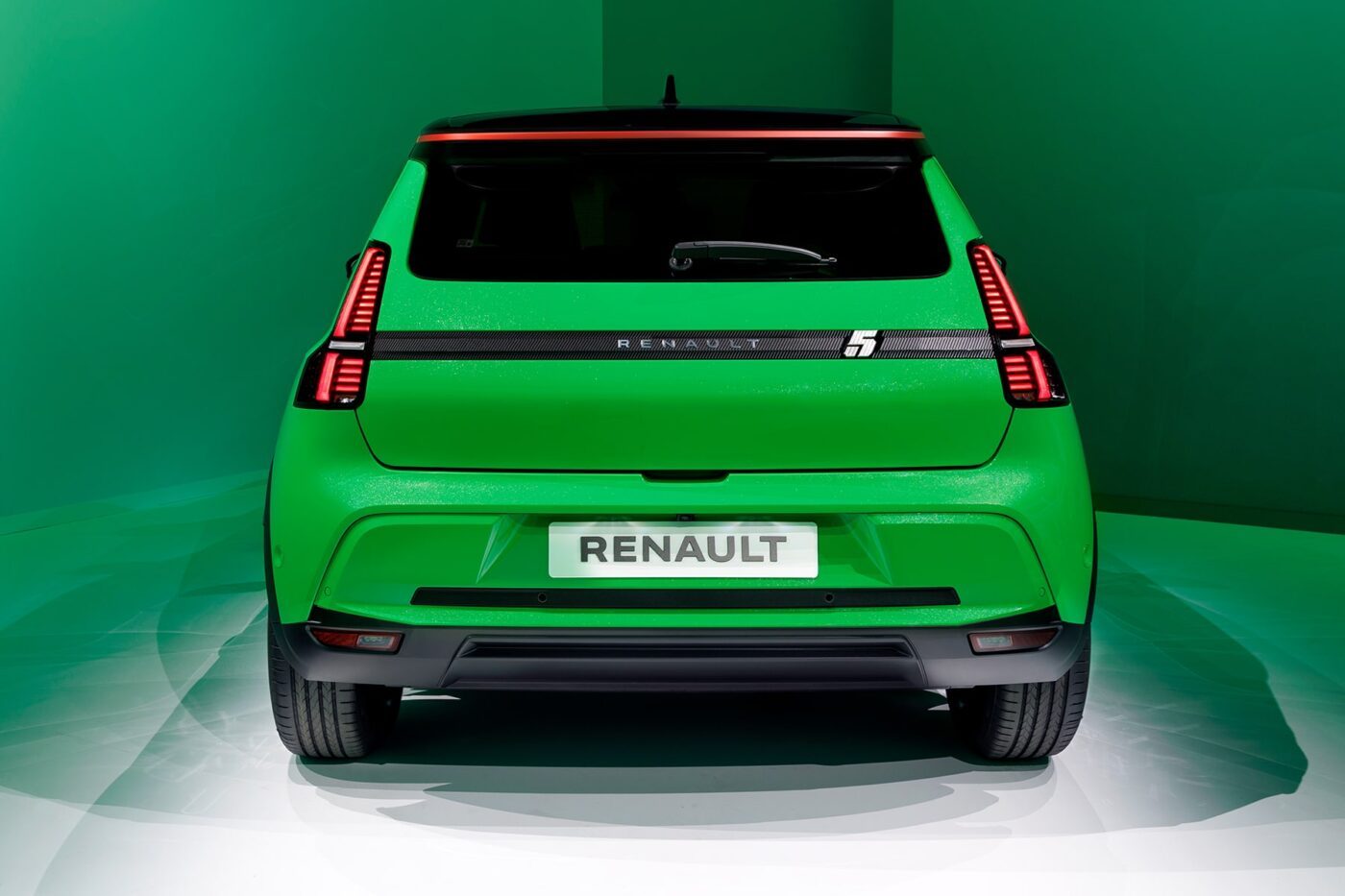
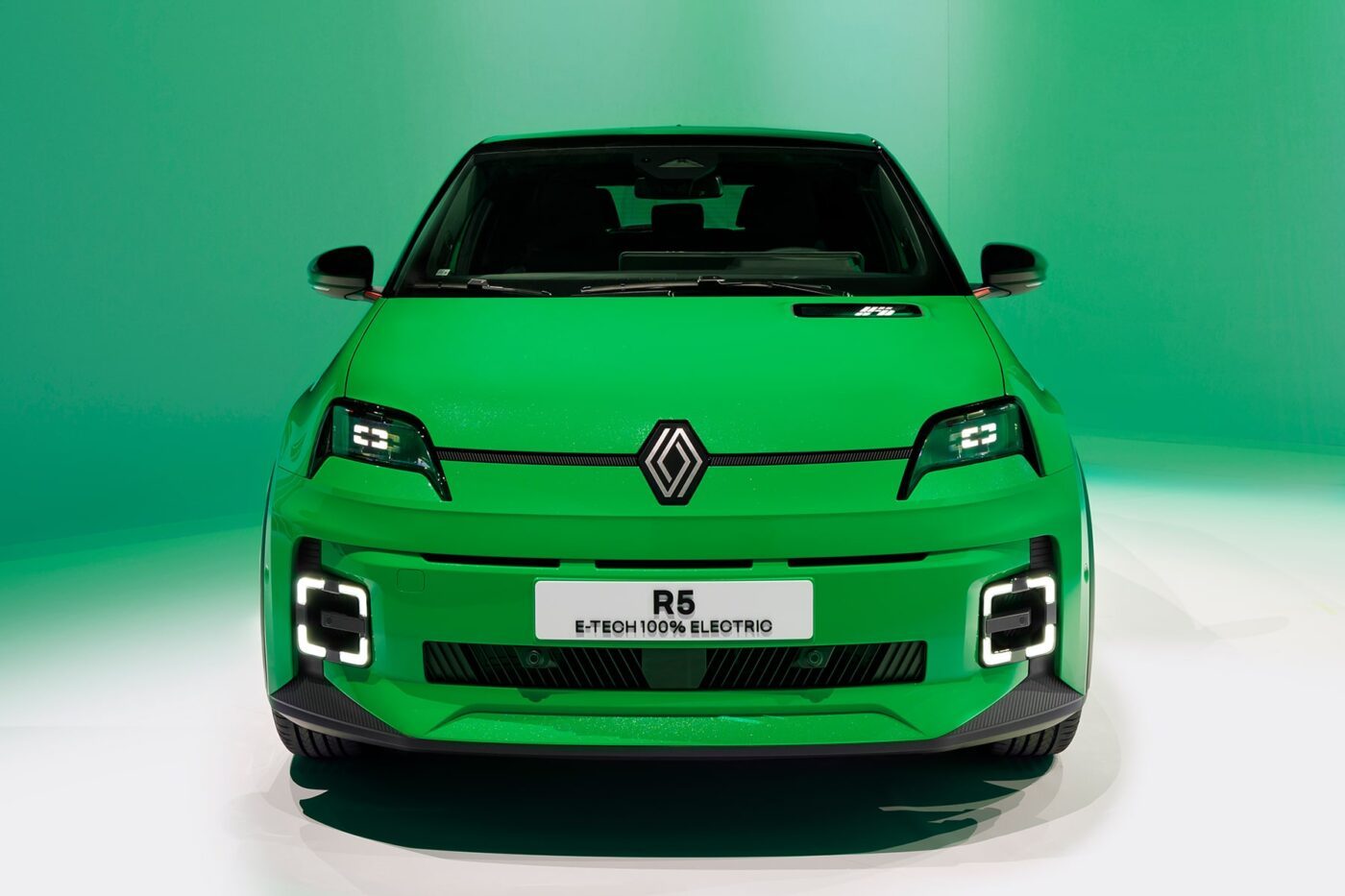
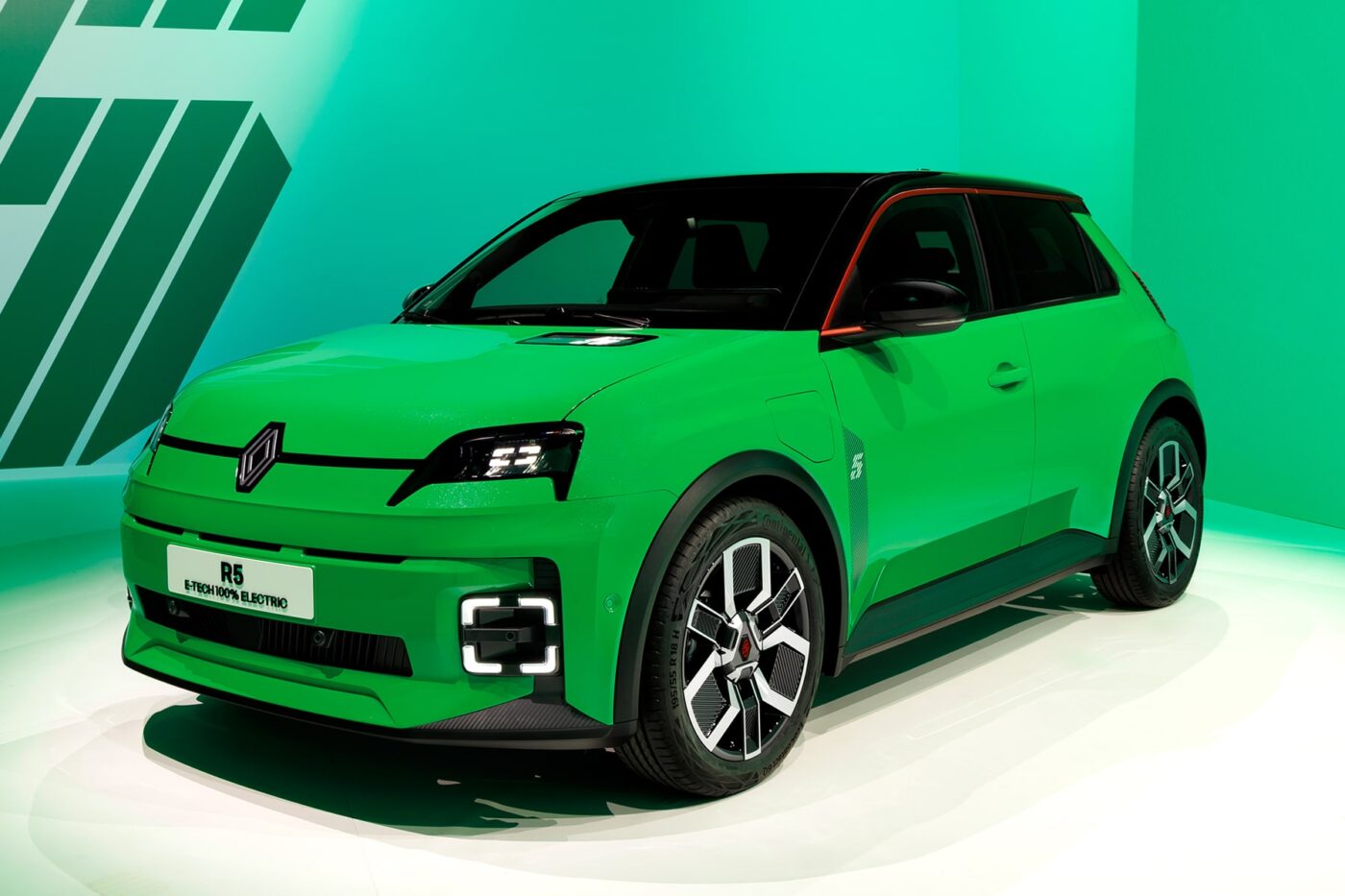
When it came to the look, the designers pursued two main lines: to align the model with its historical role model and to humanise it. The former approach is reflected in the bright colours, the vertical rear lights, an implied air intake on the bonnet and striking wings (homage to the Renault 5 Turbo). To humanise the electric R5, “pupils” have been integrated into the front LED headlights using a laser-based etching process. The vehicle is supposed to “blink” as the owner approaches. Other features in this line of thought include the Reno avatar, which makes its debut in the new R5. The two design strands are definitely competing: while the study of the 2021 car still hinted at an angular front and largely angular lights, these features inherent to the original R5 have given way to a rounder and friendlier look in the production model. The lights at the front actually look a bit like comic eyes.
Incidentally, an unusual feature on the bodywork is an indicated air intake on the bonnet (familiar from the original), which functions as an external battery level indicator in the electric model. The vehicle’s charge level can, therefore, not only be checked in the cockpit or in the app, it is also displayed to the driver in this field on the bonnet when approaching the vehicle.
Extravagant colours and denim seat upholstery
The Renault 5 E-Tech Electric is available in three trim levels called Evolution, Techno and Iconic Five, although only the two higher trim levels will initially be available for the autumn launch. The standard colour for Techno is bright green including glitter effect (on closer inspection, from a distance the paint looks conventional). If you want more subtle exterior colours, you pay a surcharge. This fact alone can be seen as a statement that Renault wants to create an unmistakable reference to its predecessor with its new B-Class car, but also wants to be explicitly extravagant. A bright yellow colour is also available, as well as white, black and midnight blue. From the Techno level upwards, a two-tone paint finish with a black roof is possible.
The interior continues in a pop-art style with denim seat upholstery. In the Techno version, this fabric can also be found on the dashboard and in the door panelling. In the higher Iconic trim, on the other hand, the seats are in grey and yellow. Renault creates further customisation options with 3D-printed accessories, including a bread basket for baguettes that can be attached to the centre console. There is also room for personalisation on the outside with optional stickers for the roof and front doors.
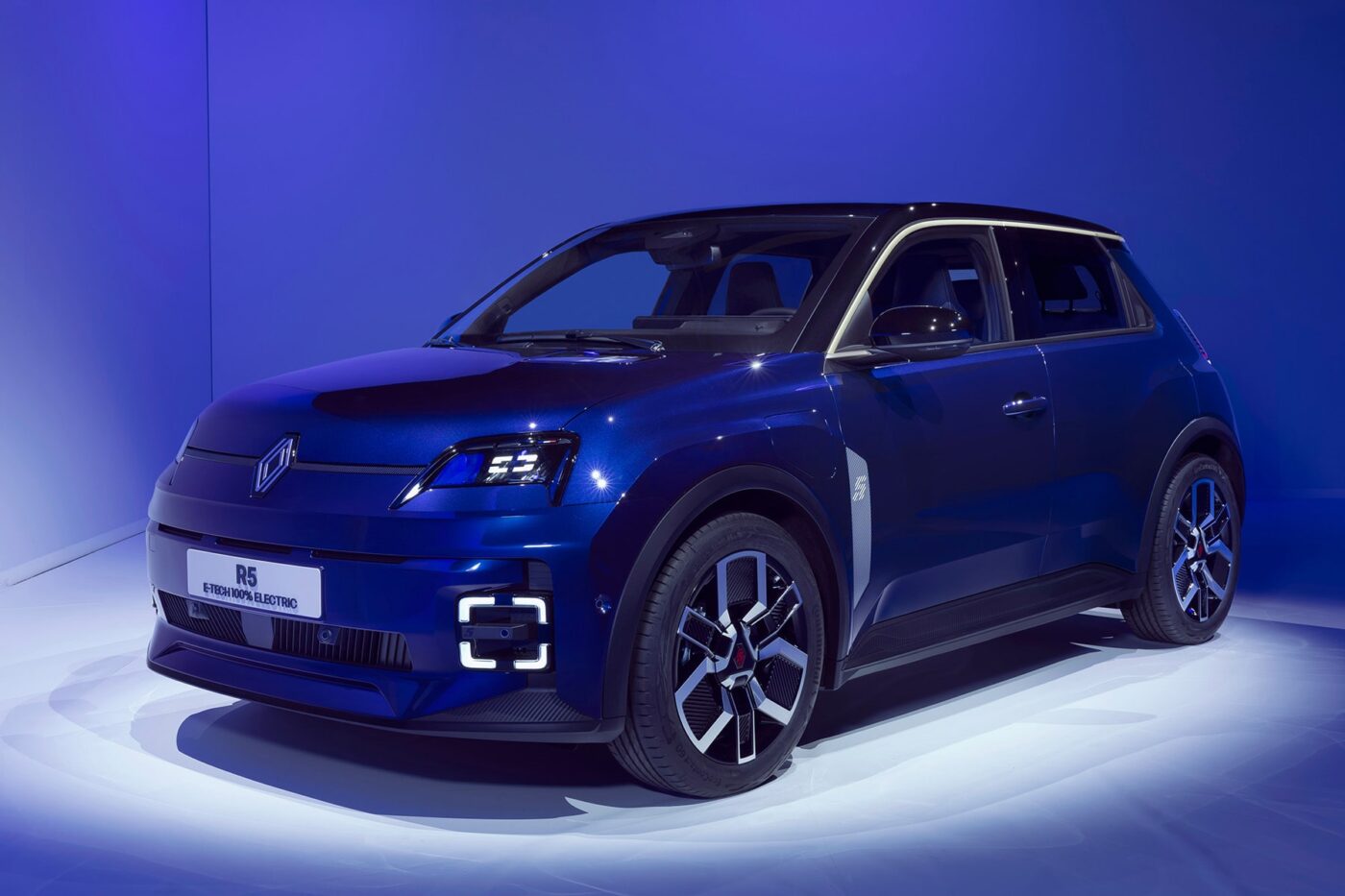
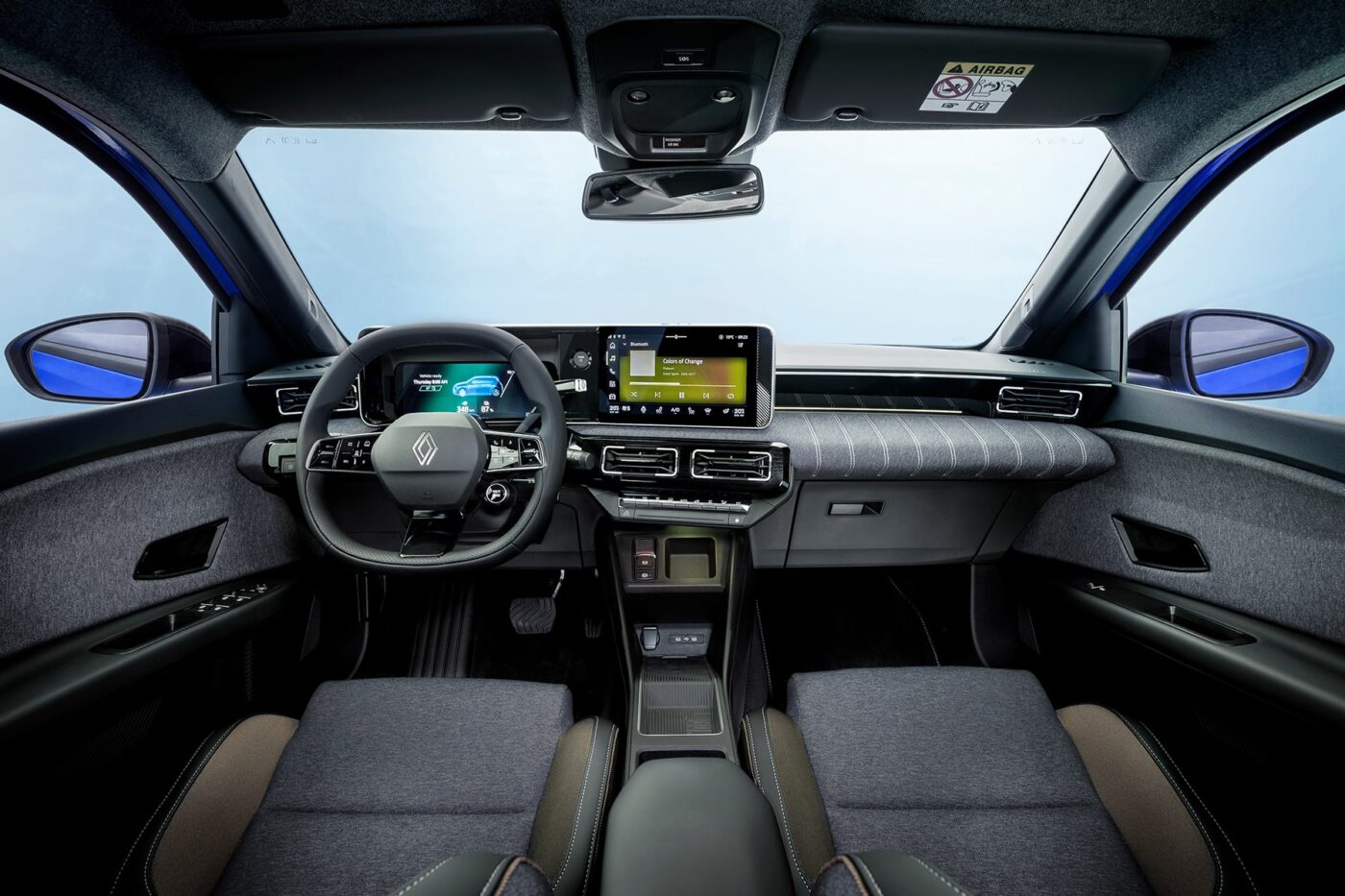
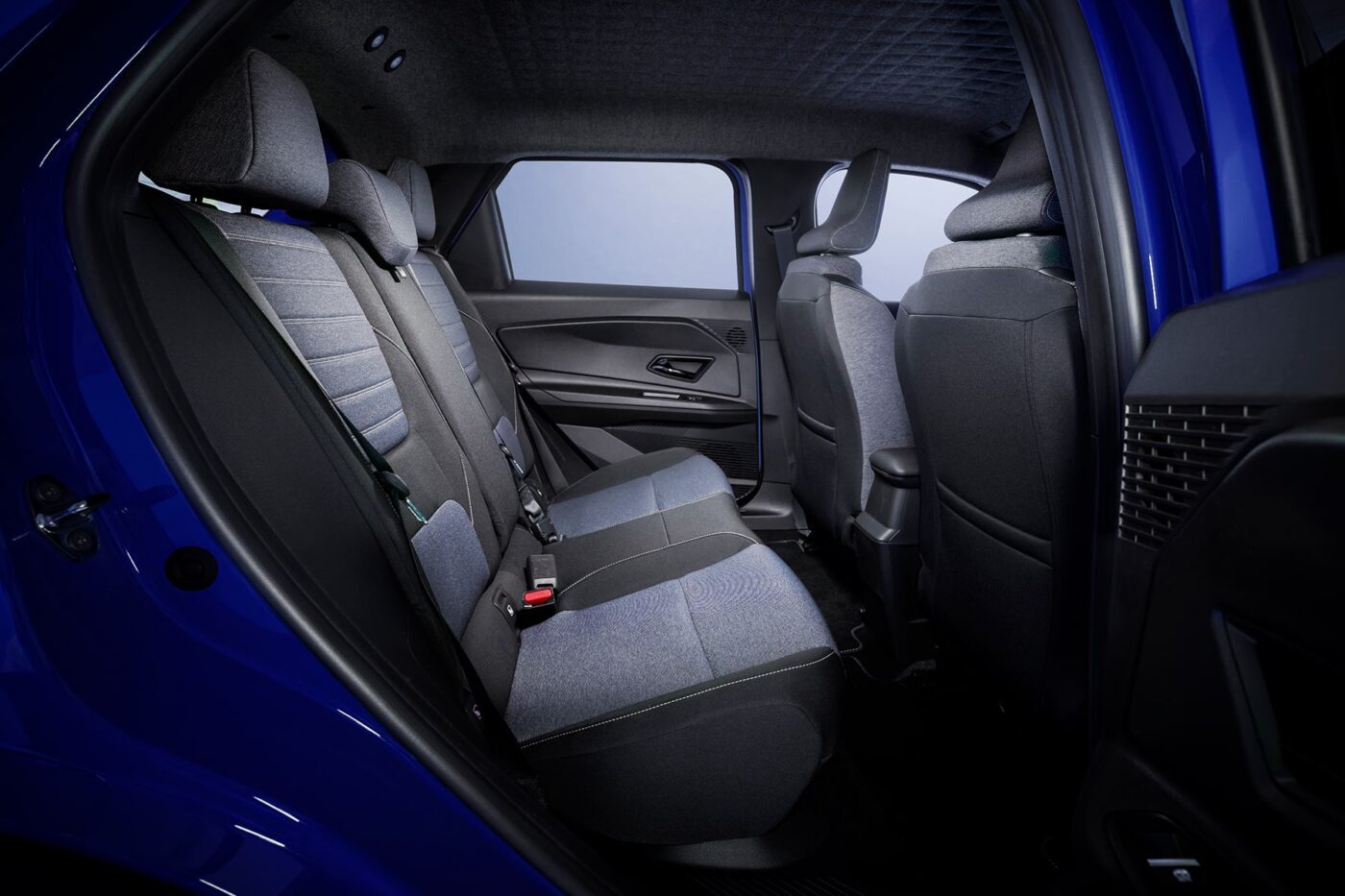
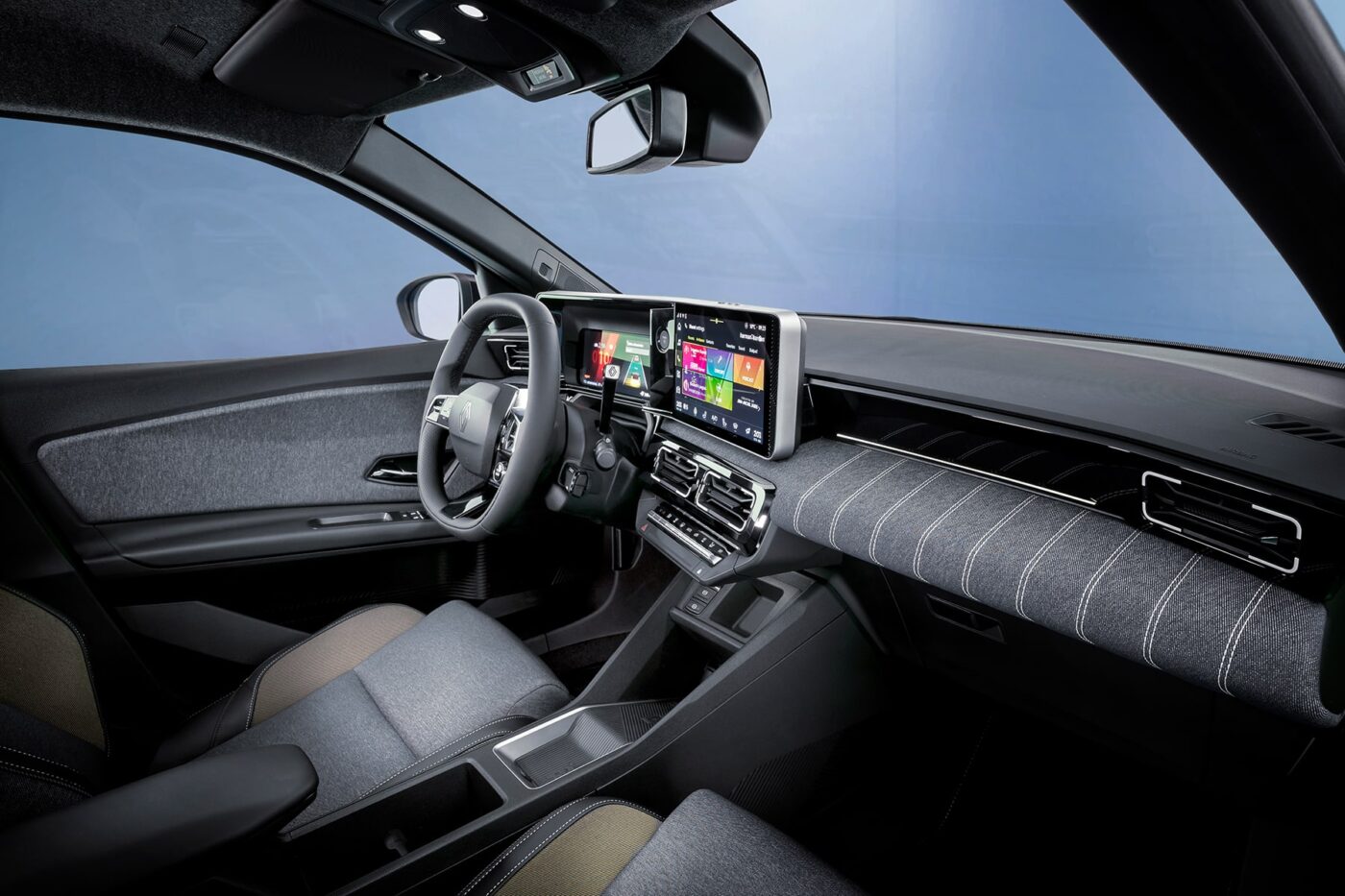
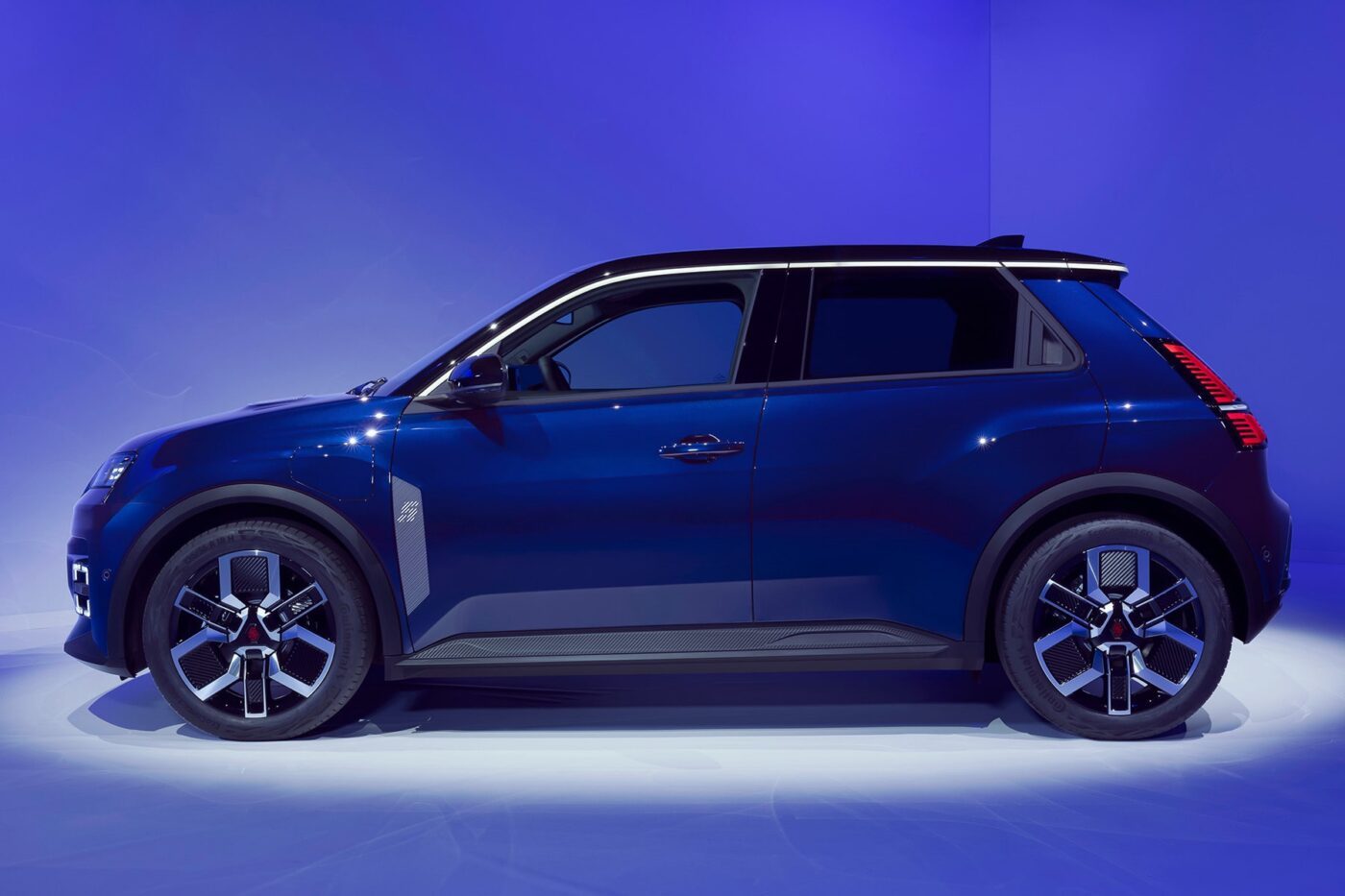
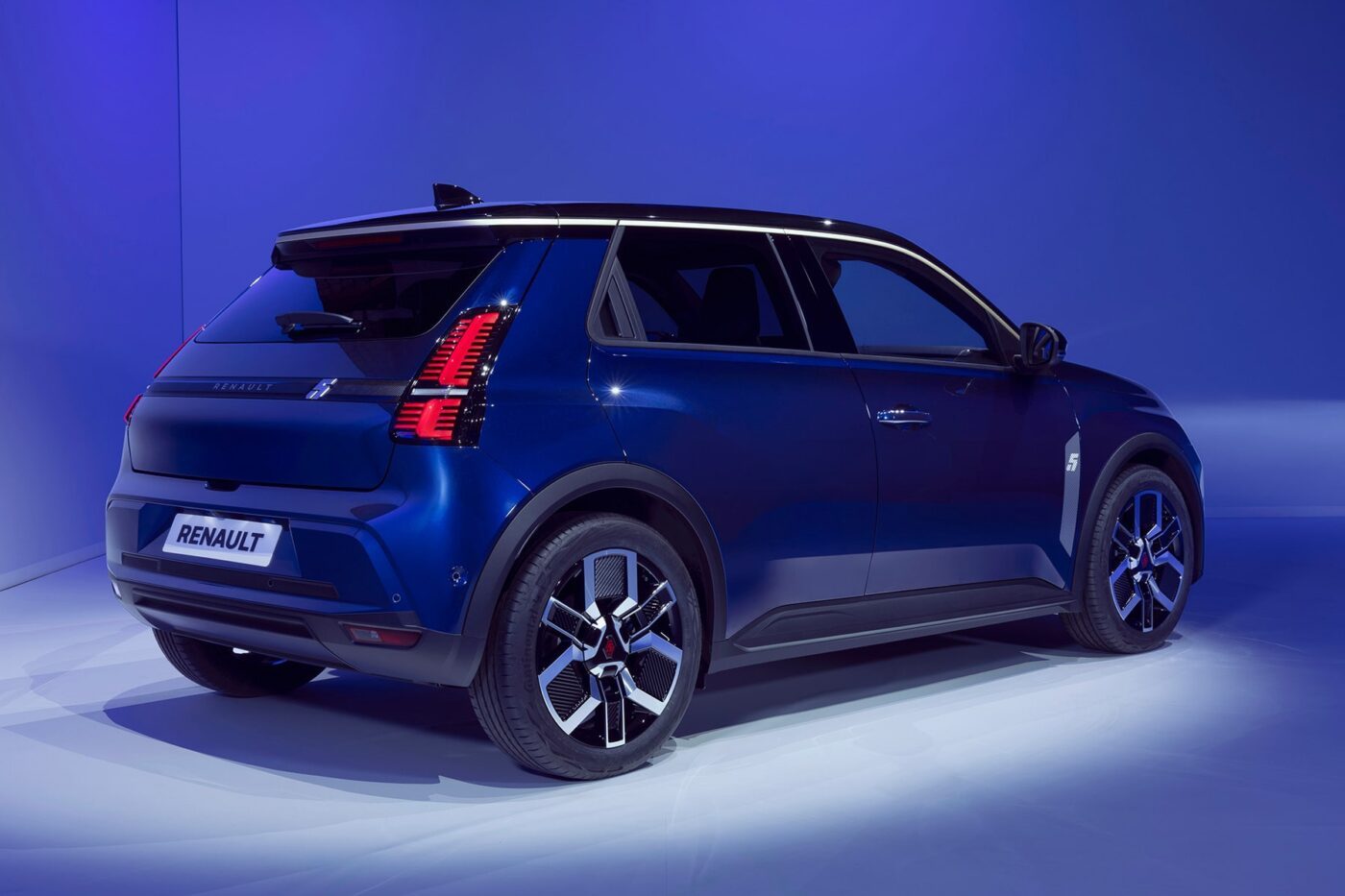
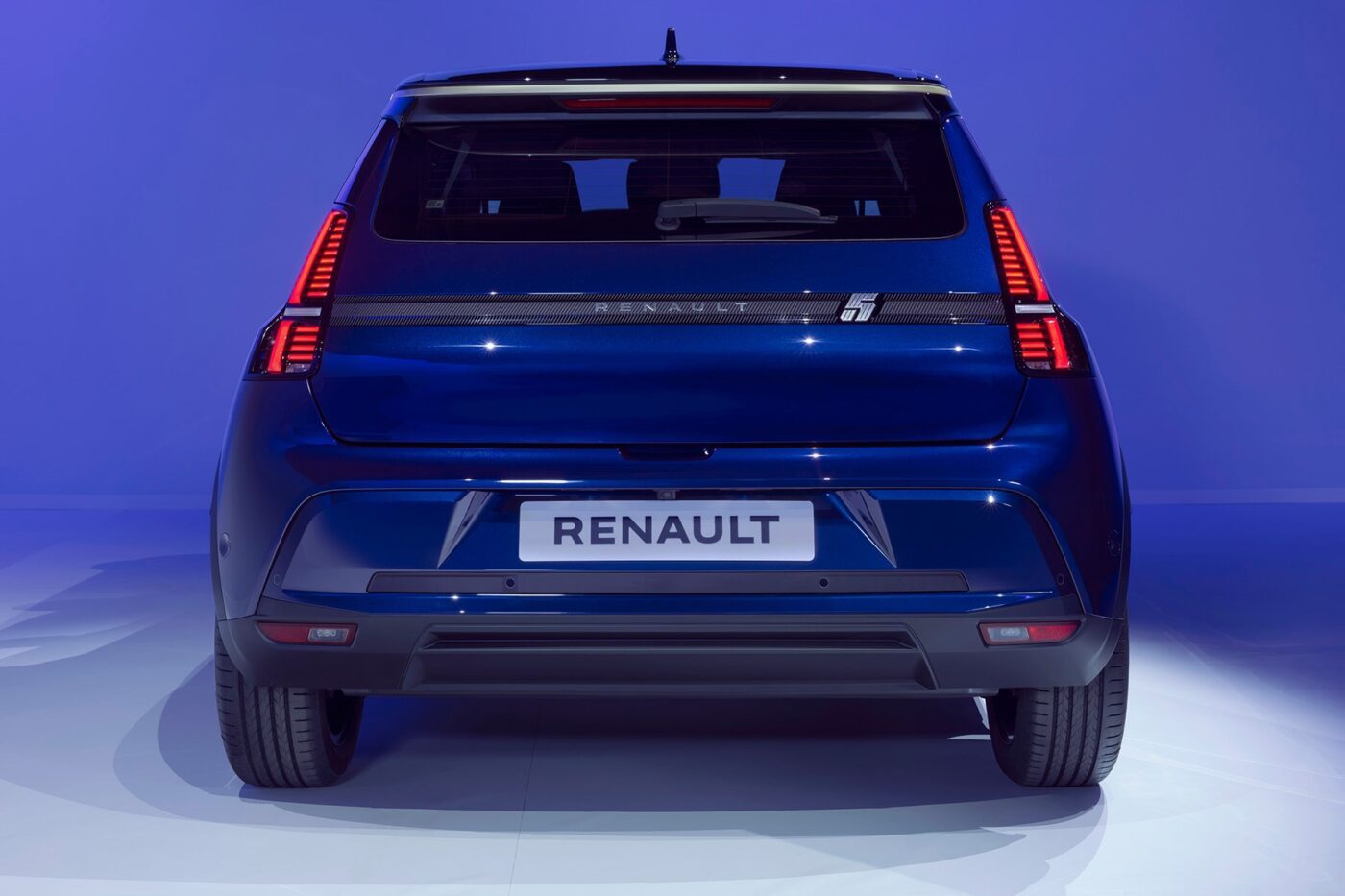
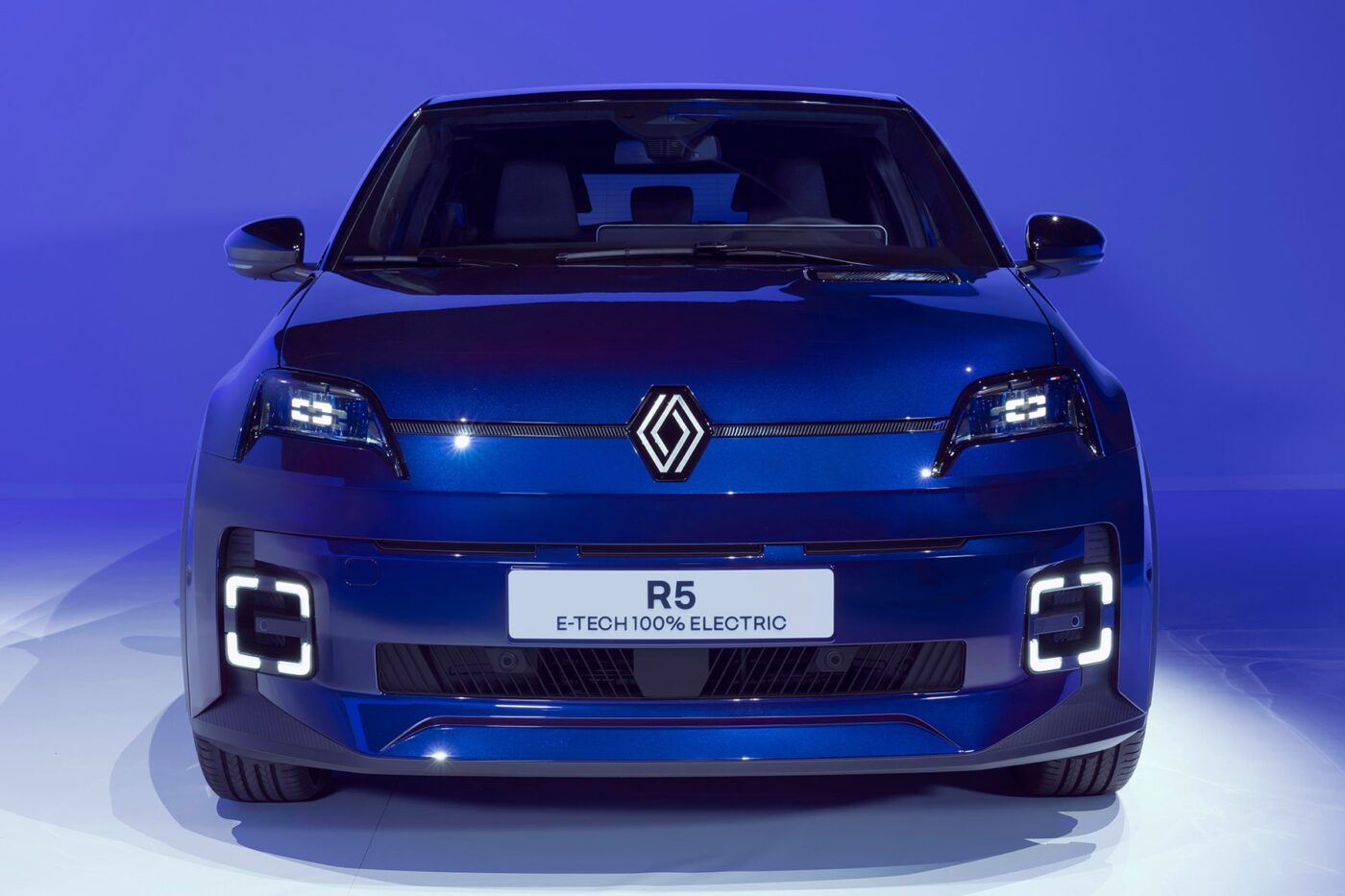
The cockpit houses two horizontal screens. The display behind the steering wheel is standard, while the 10-inch multimedia touchscreen in the centre is replaced by a 7-inch screen in the entry-level version. In the Techno and Iconic Five trim levels, it is coupled with an OpenR Link system, including Google Services. Another important point: there is not a lot of space on the rear bench of the 3.92 metre Stromer. Due to the relatively large boot and the flat battery, tall people will not be happy with their knee angle in the back seat in the long term.
Those who were once familiar with the R5 will recognise several design features in the interior: The seats are borrowed from the R5 Turbo from the 80s, the quilted roof lining and the padded glove compartment area are from an early Renault 5 generation, as is the rectangular instrument cluster with rounded edges.
Let’s move on to the scope of the standard equipment. All electric versions of the R5 have 18-inch wheels, a hands-free system, compatibility with Android Auto and Apple CarPlay, an electric handbrake and full LED headlights with high beam assist. The OpenR Link multimedia system with integrated Google is not standard in the Evolution trim. As mentioned above, the smallest motorisation also lacks the DC charging function and V2G capability. This should be borne in mind when Renault talks about a price “from 25,000 euros”. The better-equipped variants are, therefore, likely to be more expensive.
The Techno version is equipped as standard with alloy wheels, a reversing camera, an inductive smartphone charging area, the aforementioned
charging display on the bonnet and an adaptive cruise control.
The Iconic Five equipment variant also offers heated seats and steering wheel
steering wheel heating, front, rear and side parking assistance and a
a variety of design features. Initially, Techno and Iconic will only be combinable with the large battery, but this is set to change in the future. In addition, the French company is already announcing further equipment variants, such as a planned ‘Roland Garros Collection’.
Luca de Meo, CEO of Renault Group, describes the Renault 5 E-Tech Electric as a car unlike any other. “Its release coincides with a major shift by millions of Europeans towards new mobility which is electric, connected, and sustainable. It also triggered the transformation of Renault Group into a next-generation automotive company.” In order to develop this car to such a high technological level in just three years in France, it was necessary to be disruptive in all decisions and as agile as possible in the organisation. De Meo concludes: “Only an iconic car could bring our teams together in this way and move the needle internally. In the face of significant change in our industry, this car paves a new way for Renault. It’s at the heart of the battle to reinvent European industry against competition coming from the East and the West.”
Renault wants the electric R5 to appeal to those who remember the original Renault 5, but also the “younger generations with different expectations, in a world in the throes of an electric and digital transition”. For all of them, the small electric car must, above all, be suitable for everyday use. With a 52 kWh battery and a range of 400 kilometres, Renault aims to leave its mark on the market. Prices will start from 25,000 euros. Even after its facelift, the smaller Dacia Spring only achieves 27 kWh and 220 kilometres, but also costs less. The Citroen ë-C3, which is a good four metres long, houses a 44 kWh LFP battery for a range of 300 kilometres but is also cheaper in the entry-level version at 23,300 euros. It remains to be seen how high the Renault prices will be for the R5 versions with DC charging function. Due to production being made in France, the manufacturing costs are admittedly higher than for a Dacia Spring built in China. After all, the ë-C3 is also manufactured in Europe. On the French market, the European origin of the Renault and Citroen Stromer ensures purchase premiums. In contrast, in Germany, there is no longer a state environmental bonus that could reduce the price.




0 Comments